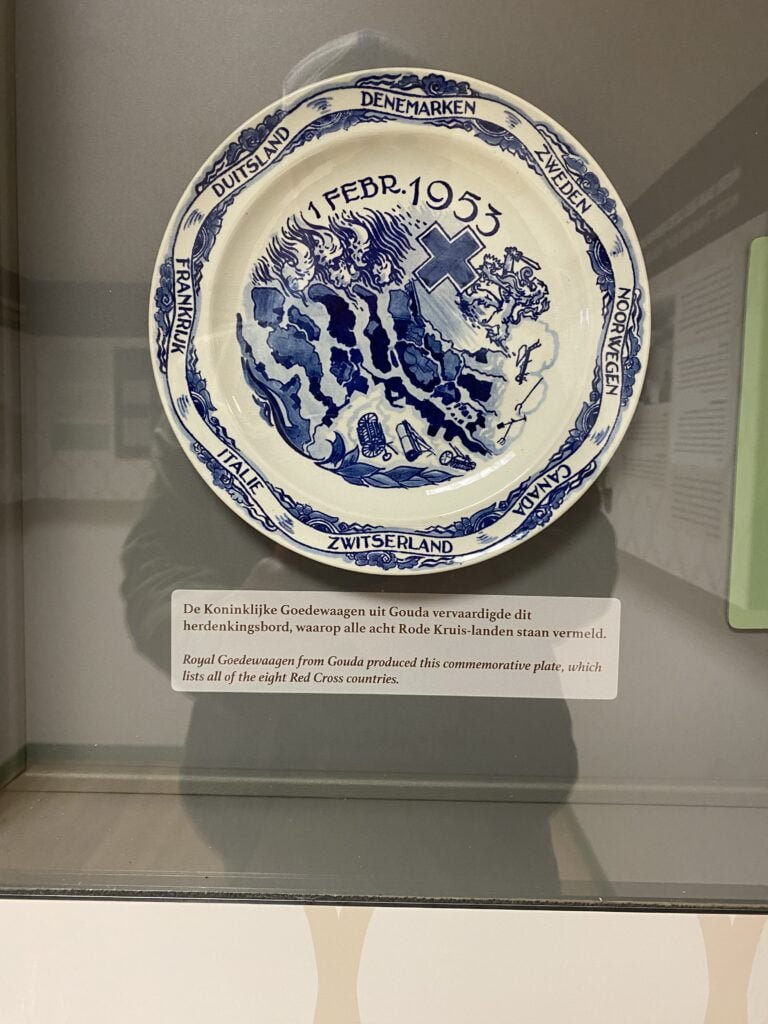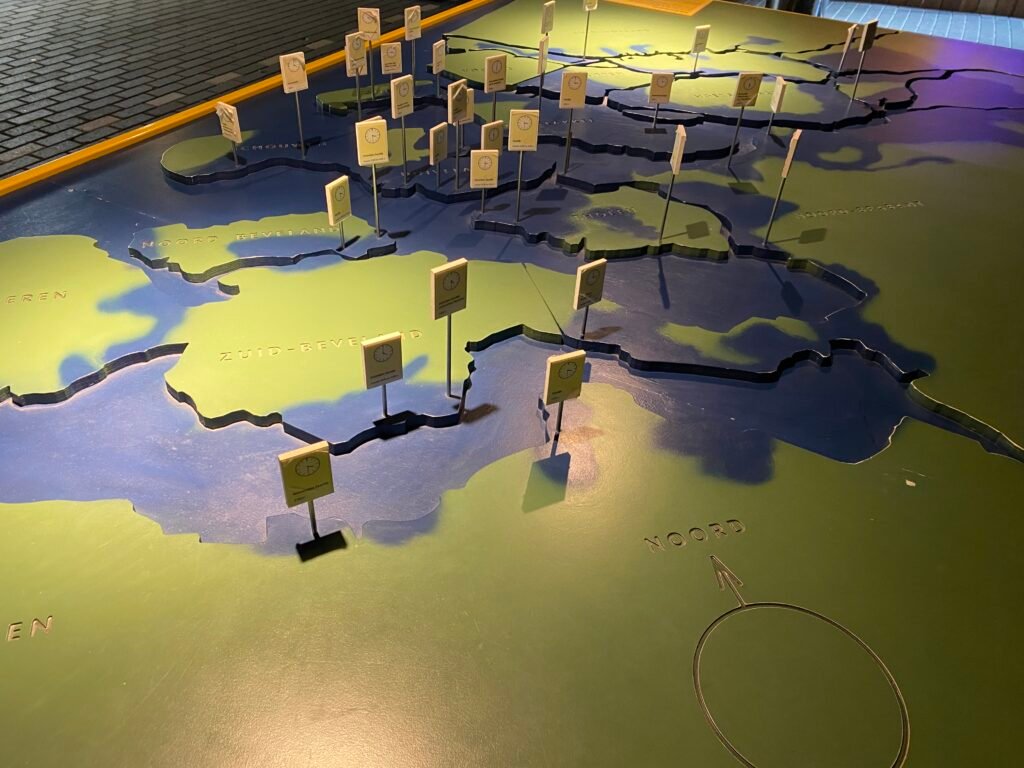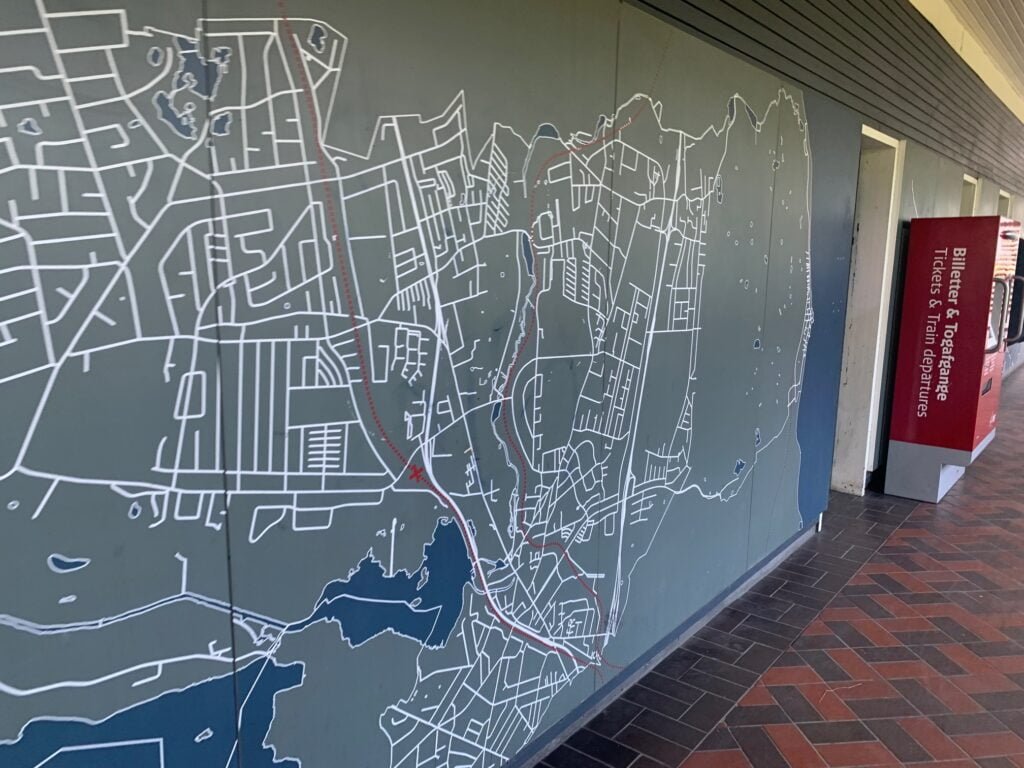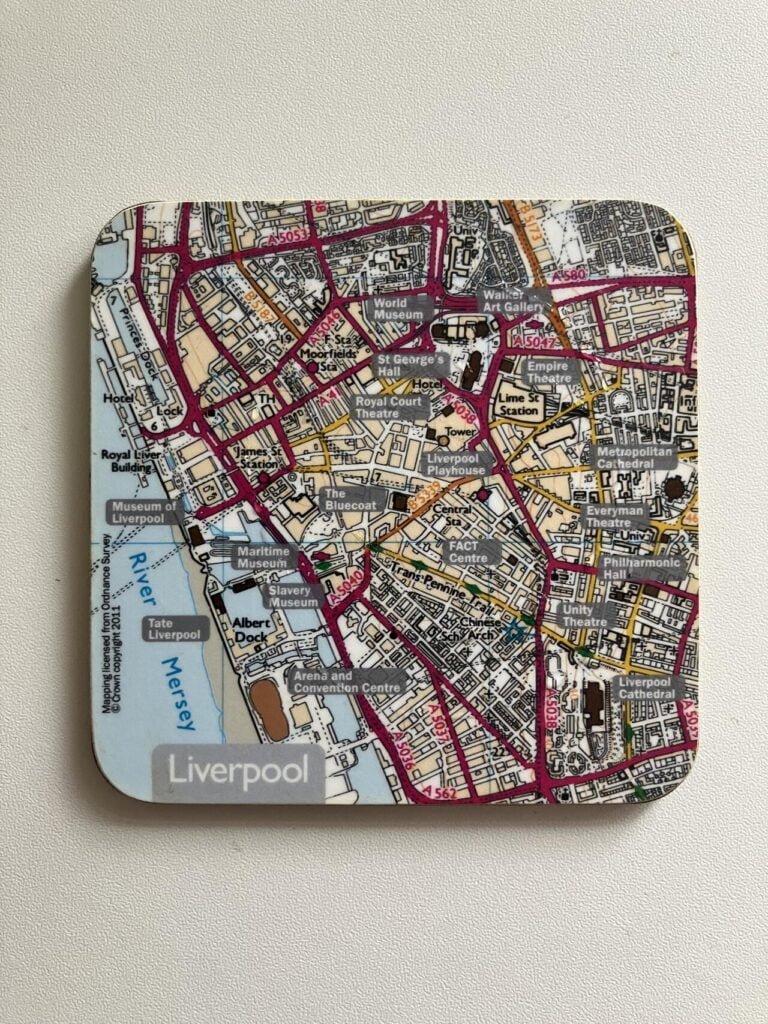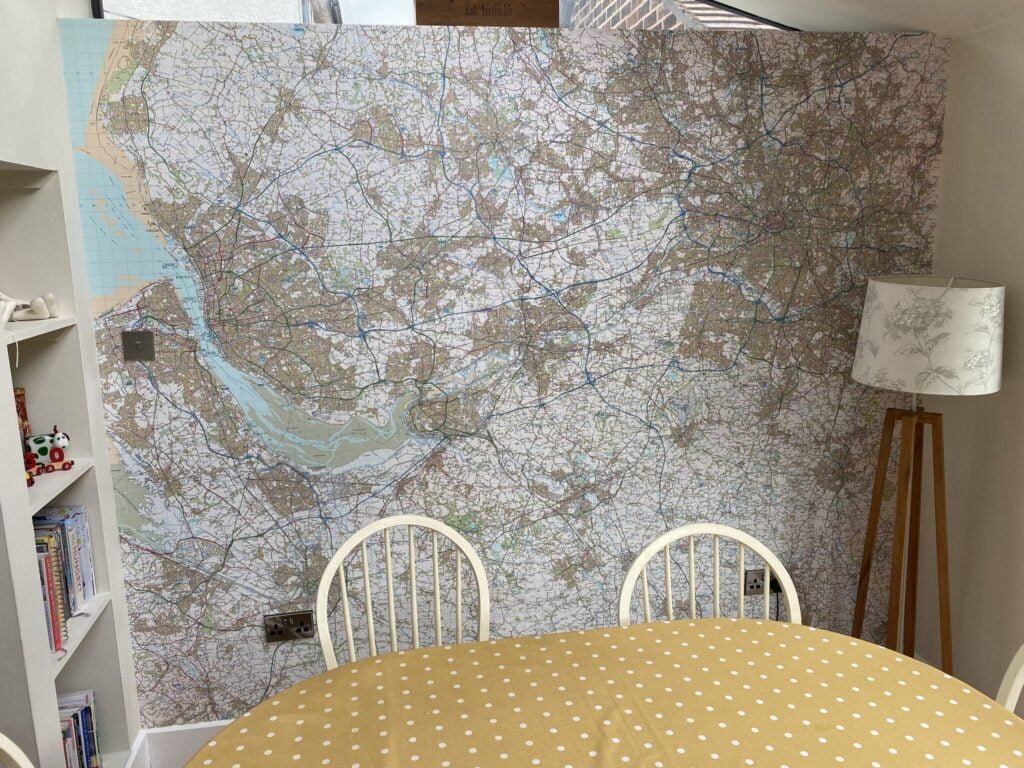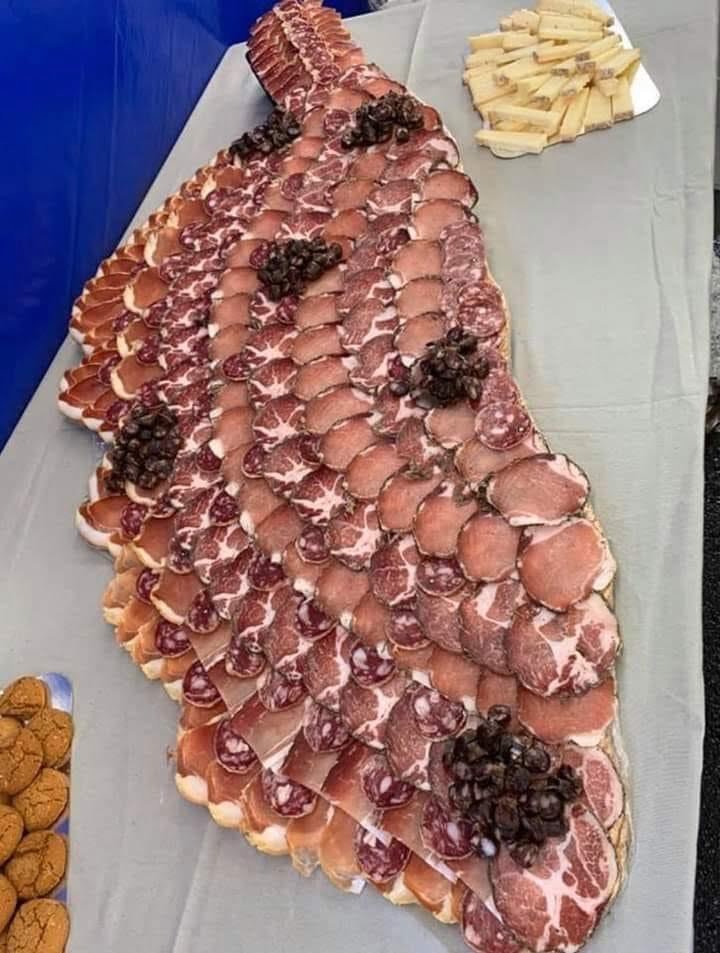Vous pouvez lire le billet sur le blog La Minute pour plus d'informations sur les RSS !
Canaux
4770 éléments (3 non lus) dans 55 canaux
 Du côté des éditeurs
(1 non lus)
Du côté des éditeurs
(1 non lus)
 Toile géomatique francophone
(2 non lus)
Toile géomatique francophone
(2 non lus)
 Géomatique anglophone
Géomatique anglophone
-
sur Mappery: Serbo-Montenegrin Attack on Dubrovnik
Publié: 11 August 2024, 11:00am CEST
-
sur QGIS Blog: Plugin Update – July, 2024
Publié: 10 August 2024, 12:05pm CEST
For the last month of July, one short of 30 new plugins were published in the QGIS plugin repository.
Here follows the quick overview in reverse chronological order. If any of the names or short descriptions catches your attention, you can find the direct link to the plugin page in the table below:
MariaDB to QGIS Fetches longitude (x) and latitude (y) data from MariaDB and writes it to a Shapefile or GeoPackage and adds it to your map. Print Selection Outputs selected features to text console. DeraPro DeraPro for projects and studies allows the download of the reference spatial data of Andalusia and make a cut of the information for a specific study area. QPackageQGZ QPackage is a tool to save both your QGIS project and data contained in the project to a new directory. ArgentinaGeoServices A QGIS plugin to import WMS Geoservices from Argentina. T Vertical Sessions Used to Vertical Sessions of Lidar Point Cloud. BuenosAires Converter A QGIS plugin that converts layers to EPSG:9497. Make Sector Plugin to create sector, circle radius, and spidergraph delimited and vector layer. CBERS-4A WPM Explorer The CBERS Explorer is a specialized plugin developed to facilitate the search and retrieval of images from the China-Brazil Earth Resources Satellite (CBERS) program, specifically focusing on the CBERS-4A satellite with Wide Field Imager (WPM) data. FPT Plot Alocation Plot alocation for forest inventory. QGISpell Creates context menu spell checking for attribute data based on ENCHANT libraries. ur-scape Data Importer Import data to ur-scape. MorphAL MorphAL plugin for QGIS. LER+ Nem adgang til LER2 forespørgsler. Threshold to ROI Create ROI (Region of Interest) with threshold values. Spell Checker Check the spelling of words in Print Layout elements. Filter By Selection Filter a given layer by the selected feature and attribute of another layer. Natur i Norge kartlegging Natur i Norge (NiN) mapping tool. AIAMAS – AI-Assisted Map Styler Symbolize your vector layers in seconds. Sentinel 2 Image Downloader This plugin allows users to download Sentinel-2 images. MapSafe Safeguard datasets using masking, encryption and notarisation. GPX Maker for GARMIN® devices This plugin exports GPX files for GARMIN® devices. QGIS Sound Effects Add sound effects to QGIS to make work less boring. Mosaic Tool A plugin to mosaic bands from selected raster layers. Polaris QGIS interface for Polaris through Polaris-Studio ArcGeek Calculator A comprehensive toolset for coordinate calculations, conversions, spatial operations, watershed analysis, land use analysis, and flood simulation in QGIS. Auxiliary Labeldata Importer Helps you to import Labeldata, stored in an auxiliary Layer from another Project. Sections Creates a section polygon layer from a point layer. Slownik warstw Tworzy s?ownik w formie pliku txt rozdzielanego tabulacjami dla wybranych warstw, program pozwala na eksport pe?nych nazw pól danej warstwy oraz wersje jako powstanie po zmienie z gpkg do shp. -
sur Mappery: Asia?
Publié: 10 August 2024, 11:00am CEST
-
sur Memorial Day Weekend Helicopter Flights
Publié: 10 August 2024, 8:40am CEST par Keir Clarke
The Gothamist has mapped out helicopter flights over New York City during the Memorial Day Weekend. The map accompanies a story on the rise in residents' complaints about helicopter noise in the city and the news that the City Council is introducing two bills aimed at reducing helicopter traffic.The interactive map in NYC Council bills aim to soar above helicopter noise complaints uses data
-
sur Fernando Quadro: Curso de GeoNode: Inscrições abertas
Publié: 9 August 2024, 6:43pm CEST
Aprenda a criar a sua própria Infraestrutura de Dados Espaciais com o GeoNode, uma plataforma para gestão e publicação de dados geoespaciais que reúne projetos open source maduros e estáveis sob uma interface consistente e fácil de usar, permitindo que os usuários, compartilhem seus dados de forma rápida e fácil.
Este curso visa capacitar os profissionais no uso eficiente da plataforma GeoNode, e tem como objetivos:
 Familiarizar os participantes com os conceitos fundamentais do Geonode e suas capacidades.
Familiarizar os participantes com os conceitos fundamentais do Geonode e suas capacidades.
 Explorar o funcionamento de servidores de mapas e seus benefícios.
Explorar o funcionamento de servidores de mapas e seus benefícios.
 Apresenar como realizar a criação de usuários e grupos de acessos às suas informações.
Apresenar como realizar a criação de usuários e grupos de acessos às suas informações.
 Ensinar como realiza a criação de seus Mapas, Dashboards e GeoStories.
Ensinar como realiza a criação de seus Mapas, Dashboards e GeoStories.
 Realizar a integração do Geonode com o QGIS através de plugins.
Realizar a integração do Geonode com o QGIS através de plugins. Quer saber mais?
Quer saber mais?O Curso é oferecido na modalidade EAD Ao Vivo, com uma carga horária de 18 horas divididos em 6 encontros. Porém, essas aulas são gravadas e ficam disponíveis ao aluno por 12 meses em nosso portal do aluno.
Então, se por acaso você não puder comparecer em alguma das aulas ao vivo, não se preocupe, você poderá rever a aula gravada a qualquer momento.
 Ficou interessado?
Ficou interessado? -
sur KAN T&IT Blog: Innovación y Colaboración en FOSS4G Europe 2024
Publié: 9 August 2024, 4:39pm CEST
¿Te apasionan las tecnologías geoespaciales de código abierto? Si es así, FOSS4G Europe 2024 en Tartu, Estonia, fue el evento que no debiste perderte.
¿Alguna vez te has preguntado cómo el software de código abierto está revolucionando el mundo de los Sistemas de Información Geográfica (SIG)? FOSS4G Europe 2024 reunió a expertos y entusiastas de todo el mundo para explorar esta pregunta y mucho más.
Durante siete días, del 1 al 7 de julio, Tartu se convirtió en el epicentro de la innovación geoespacial. En esta ocasión, nuestro CEO, Ariel Anthieni y nuestro Sales Engineer, Adrián Yoris, tuvieron la oportunidad de participar de este evento.La conferencia ofreció una serie de talleres interactivos, presentaciones de vanguardia y sesiones plenarias con ponentes de renombre. Uno de los momentos destacados fue la presentación sobre la implementación de SIG de código abierto en proyectos comunitarios, donde se discutió cómo estas herramientas están transformando la gestión de recursos naturales en regiones rurales.
Un ejemplo notable fue el estudio de caso de una comunidad en Estonia que utilizó software SIG de código abierto para mejorar la gestión de sus bosques, resultando en una optimización del 20% en la recolección de datos y una mejor conservación ambiental. Esta historia ejemplifica cómo la tecnología puede ser una fuerza para el bien común.
Además, Ariel fue invitado a participar en el panel “Changing the mindset of ‘Open Source is just for those who can’t afford to pay licenses’”, junto a otros expertos como Codrina Ilie de Terrasigna y Matthias Kuhn de OPENGIS.ch, para compartir su experiencia como CEO de Kan Territory & IT, y comentar sobre cómo las soluciones basadas en código abierto pueden transformar sectores públicos y privados, ofreciendo innovación personalizada e integración eficiente de tecnologías geoespaciales.
FOSS4G Europe 2024 no solo fue un evento educativo, sino también una celebración de la colaboración y la innovación en el ámbito de los SIG. Si te lo perdiste, no olvides seguir las actualizaciones y prepararte para la edición internacional que se realizará en Belém, Brasil. Comparte tus experiencias y pensamientos en los comentarios, y sigue explorando más sobre el fascinante mundo de las tecnologías geoespaciales de código abierto.
¡Nos vemos en Brasil en la FOSS4G Internacional!Créditos de la Foto: Andres Tennus (fotógrafo de la FOSS4G Europe)
-
sur Mappery: Finger Lakes Wines
Publié: 9 August 2024, 11:00am CEST

Doug Greenfield shared this wine map “Finger Lakes Wine Center @ Sonnenberg Gardens.”
MapsintheWild Finger Lakes Wines
-
sur Tripgeo Cities
Publié: 9 August 2024, 8:46am CEST par Keir Clarke
A few months ago Map Channels kindly offered to create a json feed for my Guess This City game. I had been complaining about having to add a new city to the game every day. Map Channels then volunteered to create a feed for the game which gives the name, coordinates, population and a description of a different city each and every day. The result is that Guess This City now updates daily without
-
sur Ian Turton's Blog: How to reproject features in QGIS
Publié: 9 August 2024, 2:00am CEST
I came across a brilliant thread on Mastodon by Sarah Dal discussing how she worked out what the most remote post box in the UK was. But there was one remark that bothered me, she said that to convert her lat, lon points to OSGB (EPSG:4326 to EPSG:27700 for the nerds) she had to go to the Ordnance Survey site to find some software to do this. Since she already had the points in QGIS this seemed like an unnecessary side quest to me. When I commented that she could have done this in QGIS she said that she always seemed to get it wrong.
I’m confused by this (and by the many other people who ask questions on gis.stackexchange.com about the same thing) so I’ve put together this video showing how I would do this. Basically, you right click on the layer you want to reproject and select
export->Save features asand then just change the drop down box to the projection you need. QGIS will then save the features and add that layer to your project. You shouldn’t see any difference other than the colour of the points will change (as QGIS assigns a new random colour to the new layer).And yes, I really should have split the Northern Irish post boxes out into a separate file and projected them to the Irish grid but this is just a demo.
-
sur OGC Approves Model for Underground Data Definition and Integration as Official Standard
Publié: 8 August 2024, 3:00pm CEST par Simon Chester
The Open Geospatial Consortium (OGC) is excited to announce that the OGC Membership has approved version 1.0 of the OGC Model for Underground Data Definition and Integration (MUDDI) Part 1: Conceptual Model for adoption as an official OGC Standard. MUDDI serves as a framework to make datasets that utilize different information for underground objects interoperable, exchangeable, and more easily manageable.
MUDDI represents real-world objects found underground. It was designed as a common basis to create implementations that make different types of subsurface data – such as those relating to utilities, transport infrastructure, soils, ground water, or environmental parameters – interoperable in support of a variety of use cases and in different jurisdictions and user communities. The case for better subsurface data and an explanation of the usefulness of the MUDDI data model is made in this MUDDI For Everyone Guide.
Certainly, a key focus application domain, and one of the main motivations for creating MUDDI, is utilities and the protection of utilities infrastructure. Indeed, OGC’s MUDDI Model was successfully used in pilot testing for the National Underground Asset Register (NUAR), a program led by the UK Government’s Geospatial Commission. More information on NUAR can be found here.
MUDDI aims to be comprehensive and provides sufficient level of detail to address many different application use cases, such as:
- Routine street excavations;
- Emergency response;
- Utility maintenance programs;
- Large scale construction projects;
- Disaster planning;
- Disaster response;
- Environmental interactions with infrastructure;
- Climate Change mitigation; or
- Smart Cities programs.
The MUDDI Conceptual Model provides the implementation community with the flexibility to tailor the implementations to specific requirements in a local, regional, or national context. The standardization targets are specific MUDDI implementations in one or more encodings such as GML (Geographic Markup Language), SFS (Simple Features SQL), Geopackage or JSON-FG encodings that are expected to be standards in future parts of the MUDDI standards family. Both GML and JSON-FG are supported by the OGC API – Features Standard. SFS is supported by a number of database systems.
MUDDI consists of a core of mandatory classes describing built infrastructure networks (such as utility networks) together with a number of optional feature classes, properties, and relationships related to the natural and built underground environment. The creation of implementations targeted to defined use cases and user communities also allows the extension of the concepts provided in MUDDI.
The early work for crafting this OGC Standard was undertaken in the OGC Underground Infrastructure Concept Study, sponsored by Ordnance Survey, Singapore Land Authority, and The Fund for the City of New York – Center for Geospatial Innovation.
The Concept Study was followed by the Underground Infrastructure Pilot and MUDDI ETL-Plugfest workshop, as well as close collaboration with early implementers of MUDDI, such as the UK Geospatial Commission. Several implementations of MUDDI were thoroughly tested in the OGC Open Standards Code Sprint in October/November 2023. The results are described in the OGC 2023 Open Standards Code Sprint Summary Engineering Report and a blog post entitled Going underground: developing and testing an international standard for subsurface data, which describes the experiences and lessons learned from the Geospatial Commission’s attendance at the Code Sprint.
Version 1.0 of the MUDDI Conceptual Model Standard is the outcome of those initiatives, as well as the work and dedication of the MUDDI Standards Working Group, which led the development of the Standard, including:
- Editors:
- Alan Leidner, New York City Geospatial Information System and Mapping Organization (GISMO)
- Carsten Roensdorf, Ordnance Survey
- Neil Brammall, Geospatial Commission, UK Government
- Liesbeth Rombouts, Athumi
- Joshua Lieberman
- Andrew Hughes, British Geological Survey, United Kingdom Research and Innovation
- Contributors:
- Dean Hintz, Safe Software
- Allan Jamieson, Ordnance Survey
- Chris Popplestone, Ordnance Survey
OGC Members interested in staying up to date on the progress of this Standard, or contributing to its development, are encouraged to join the MUDDI Standards Working Group via the OGC Portal. Non-OGC members who would like to know more about participating in this SWG are encouraged to contact the OGC Standards Program.
As with any OGC standard, the open MUDDI Part 1: Conceptual Model Standard is free to download and implement. Interested parties can view and download the standard from OGC’s Model for Underground Data Definition and Integration (MUDDI) Standard Page.
The post OGC Approves Model for Underground Data Definition and Integration as Official Standard appeared first on Open Geospatial Consortium.
-
sur Mappery: Afghani Bread Holder
Publié: 8 August 2024, 11:00am CEST

Garrett Speed shared this “This Afghani restaurant in ‘s-Hertogenbosch has a bread holder with a map of Afghanistan as the base”
MapsintheWild Afghani Bread Holder
-
sur The Presidential Medal of Cartography
Publié: 8 August 2024, 9:59am CEST par Keir Clarke
Kamala Harris' Vice-Presidential pick Tim Walz loves maps. As a former high school geography teacher it should come as no surprise that Walz has an interest in cartography, but it appears that he is in act a full blown GIS nerd who only last year called for November 15th to be 'GIS Day'. According to Politico Tim Walz has also "addressed the geographic information systems software company
-
sur Public Services on the Map: A Decade of Success
Publié: 7 August 2024, 10:05pm CEST par Simon Chester
The Netherlands’ Cadastre, Land Registry, and Mapping Agency (Kadaster) maintains the nation’s register of land and property rights, ships, aircraft, and telecom networks. It’s also responsible for national mapping and the maintenance of the nation’s reference coordinate system and serves as an advisory body on land-use issues and national spatial data infrastructures. In its public service role, Kadaster handles millions of transactions a day.
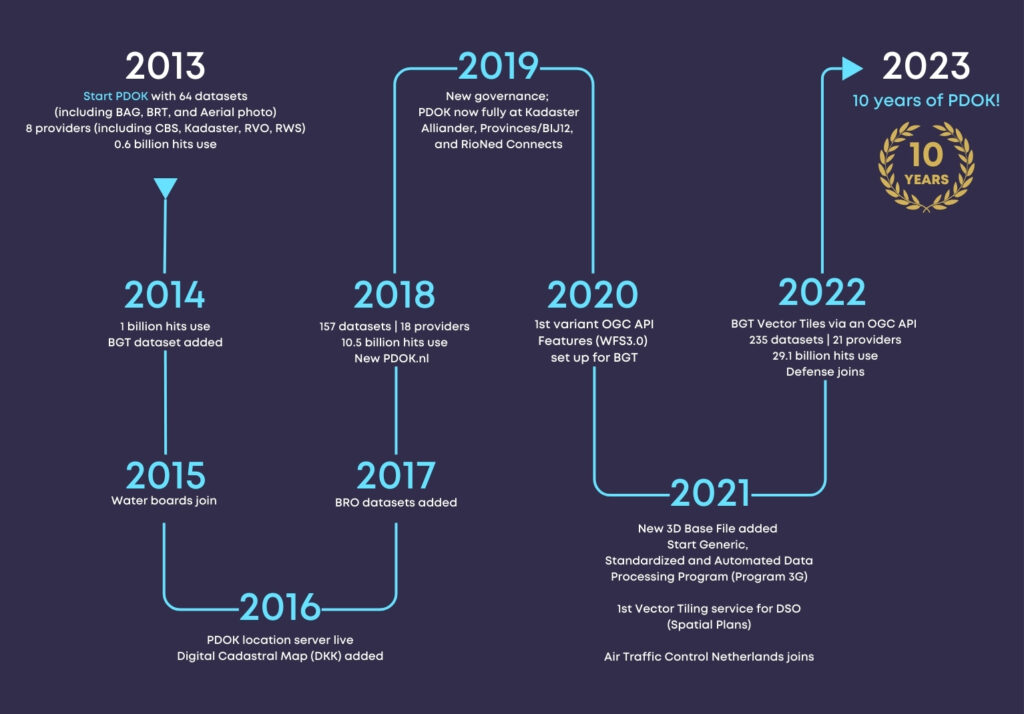 Celebrating 10 years: PDOK’s evolution. (click to enlarge)
Celebrating 10 years: PDOK’s evolution. (click to enlarge)
PDOK was launched in 2013 to make the Dutch government’s geospatial datasets Findable, Accessible, Interoperable, and Reusable (FAIR) as mandated by the EU’s INSPIRE Directive. OGC Standards have been foundational in ensuring that the country’s Spatial Data Infrastructure (SDI) is scalable, available, and responsive.
PDOK serves base maps and Earth Observation data for the whole country. It includes the Key Topography Register (Basisregistratie Topografie, BRT), aerial imagery (updated annually at 8 and 25 cm GSD), and the Large Scale Topography Register (Basisregistratie Grootschalige Topografie, BGT). The BGT is a detailed digital base map (between 1:500 and 1:5,000) that depicts building footprints, roads, water bodies, railways lines, agricultural land, and parcel boundaries. PDOK also serves a 3D dataset of buildings and terrain created from topography (BGT), building footprints (from the Building and Addresses Register or BAG), and height information (from aerial photography).
When PDOK was launched in 2013, it hosted 40 datasets and handled 580 million server requests annually. Today it hosts 210 datasets and handles 30 billion server requests annually—representing a 5,000% increase in service requests being handled by the platform.
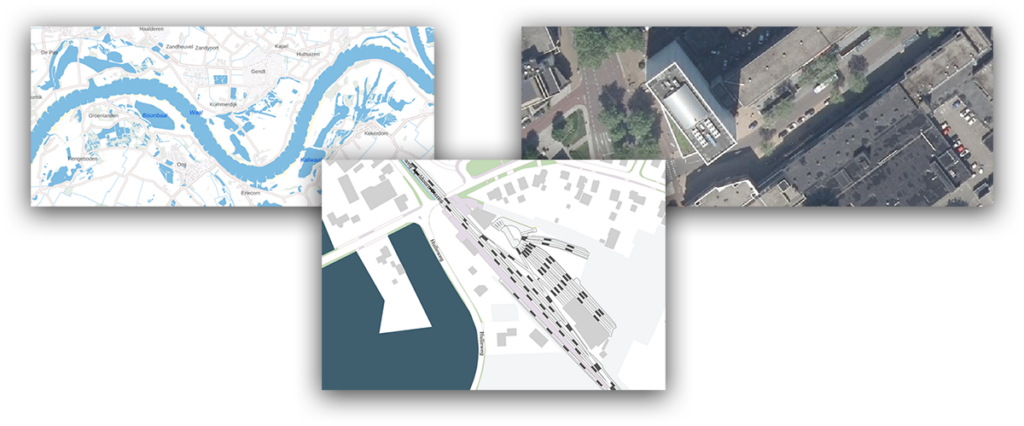 Examples of PDOK basemaps and imagery.
Standards Enabling Success
Examples of PDOK basemaps and imagery.
Standards Enabling Success
The majority of datasets on PDOK are made available using OGC’s popular Web Map Service (WMS) and Web Feature Service (WFS) standards. The BRT is available in three coordinate reference systems (EPSG 28992, EPSG 25831, and EPSG 3857) using the Web Map Tile Service (WMTS) standard.
Kadaster is in the process of transitioning to the newer OGC API Standards, including OGC API – Tiles and OGC API – Features. The most frequently used key registers, like the Building and Addresses Register (BAG), the Large Scale Topography Register (BGT), and the Key Topography Register (BRT) are in the process of being migrated to these newer OGC APIs. The focus is on using OGC API – Tiles, specifically Vector Tiles. For query services the OGC API – Features Standard is used. Although Earth Observation data doesn’t currently use the newer APIs, aerial imagery is available through WM(T)S services, stored as OGC Cloud Optimized GeoTiffs (CoG). 3D Building data is encoded as OGC 3D Tiles and served using the OGC API – 3D GeoVolumes standard.
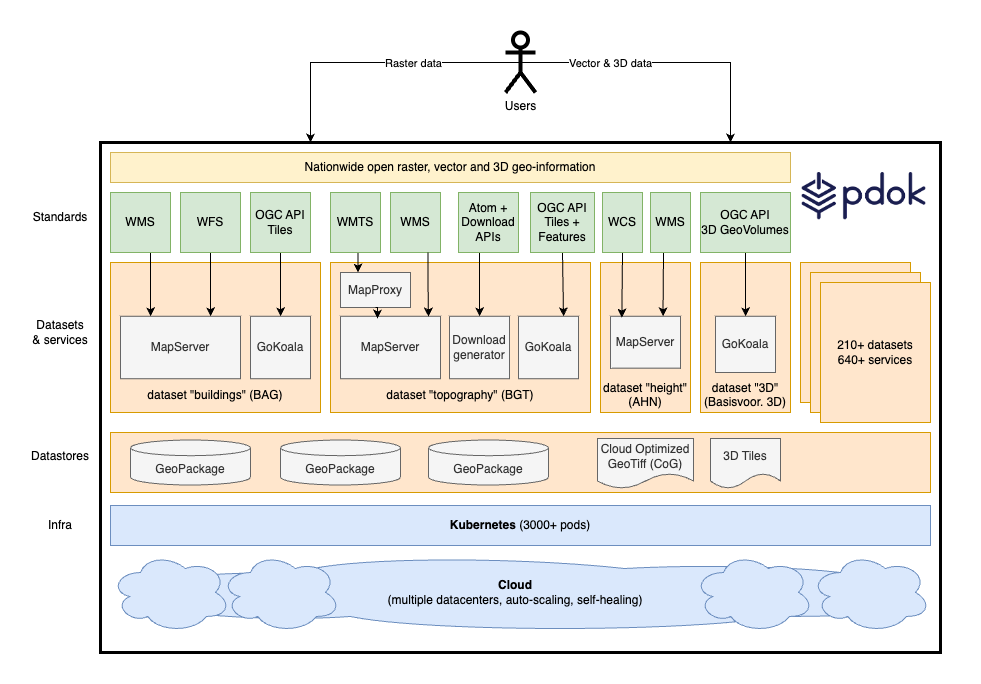 The PDOK architecture and OGC Standards. (click to enlarge)
The PDOK architecture and OGC Standards. (click to enlarge)
By using the newer OGC API Standards, Kadaster has found it significantly easier to handle the large volume of data in its national-scale 3D building dataset (which can be used between scales of 1:500 and 1:10,000) providing an unparalleled, high-resolution perspective of the country’s built environment.
OGC APIs also make it easier to track compute and memory usage on servers, allowing Kadaster to better realize platform scalability and optimize performance.
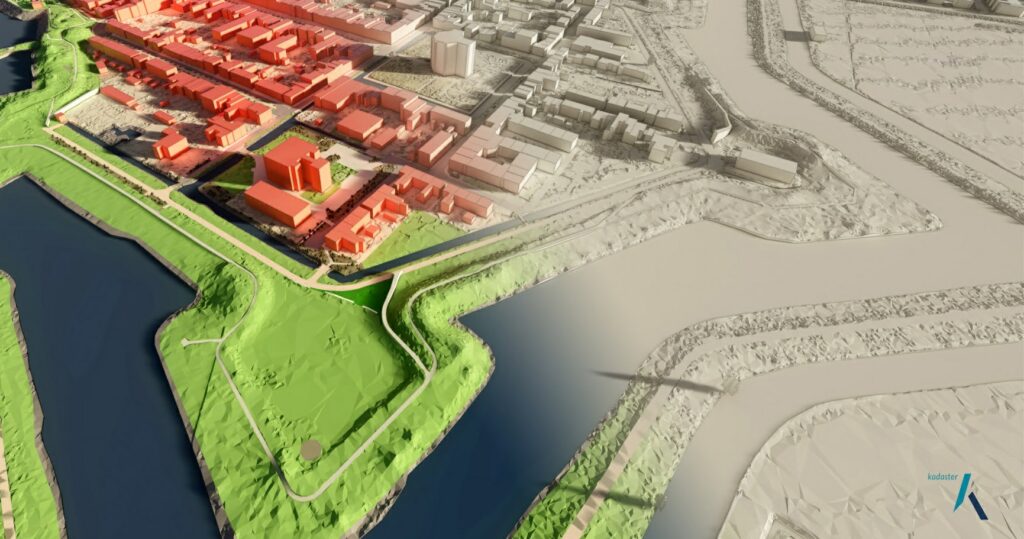 PDOK uses the OGC API – 3D GeoVolumes to serve the 3D building dataset. (click to enlarge)
A Smooth Transition to OGC APIs
PDOK uses the OGC API – 3D GeoVolumes to serve the 3D building dataset. (click to enlarge)
A Smooth Transition to OGC APIs
PDOK processes billions of user requests every month. Transitioning from OGC Web Services Standards to OGC APIs has meant Kadaster is able to efficiently handle the volume of requests it handles today – and can expect to handle in the future.
It took Kadaster little over a month to build their implementation of OGC API – Tiles. Following a short learning curve they were able to build out implementations of OGC API – Features and API – 3D GeoVolumes even faster. By making the move to deliver its geospatial tiles and feature data through an API conformant to the OGC API Standards, Kadaster continues to make government data Findable and Accessible.
PDOK implements what Kadaster calls the 3G principle—Generic (Generic), Geautomatiseerd (Automated) en Gestandaardiseerd (Standardized). This has led to simplified data processing, the automation of many manual processes, a standardization in services, and high standards in service design and operation – while at the same time remaining infrastructure independent. It has streamlined the adoption of new OGC Standards and made it better able to respond to changing user requirements.
Kadaster and OGCBeing an OGC Member allows Kadaster to leverage the collective knowledge of a global network of geospatial experts, while providing Kadaster with opportunities to contribute back to a community driven to use the power of geography and technology to solve problems faced by people and the planet.
Kadaster has recently contributed to the OGC Community by participating in an OGC Code Sprint. These hybrid online/in-person events give participants the opportunity to work on implementations of new or emerging OGC Standards.
Through OGC, Kadaster has also shared their experiences and challenges at OGC Member Meetings, contributing to the ongoing evolution of OGC Standards, Collaborative Solutions and Innovation (COSI) Program Initiatives, and, more broadly, advanced the “state of the art” of geospatial technologies.
The below video provides an overview of PDOK.
The post Public Services on the Map: A Decade of Success appeared first on Open Geospatial Consortium.
-
sur GeoSolutions: GeoSolutions Listed as Certified Cesium Developer
Publié: 7 August 2024, 6:00pm CEST
You must be logged into the site to view this content.
-
sur Mappery: A Tactile Experience in Ilhabela
Publié: 7 August 2024, 11:00am CEST
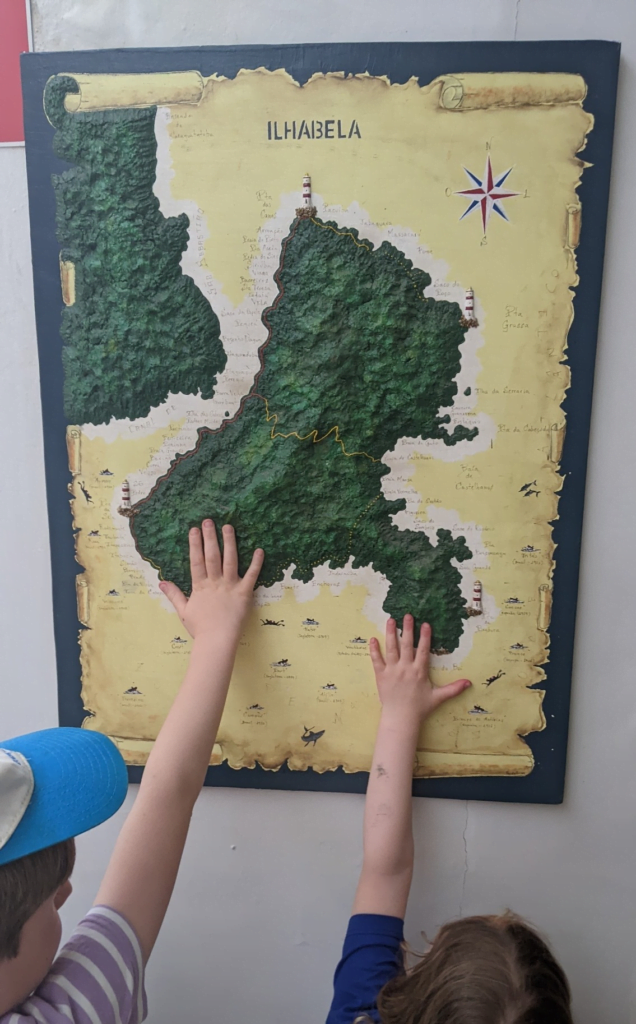
Harry Wood wrote “We arrived at Ilhabela for some Brazil beach time. It’s an island off the Sao Paulo coast. Here’s the kids getting tactile with a relief map in the hotel.”
Looks like fun
MapsintheWild A Tactile Experience in Ilhabela
-
sur The Indoor CO2 Map
Publié: 7 August 2024, 8:09am CEST par Keir Clarke
Over the years I have posted links to a number of interactive maps which visualize the levels of carbon dioxide in the atmosphere. Human activities such as burning fossil fuels, deforestation, and industrial processes help to increase the concentration of CO? in the atmosphere. Higher concentrations of CO? enhance the greenhouse effect, leading to more heat being trapped in the atmosphere.
-
sur Mappery: 30 Minute Walks in Central London
Publié: 6 August 2024, 11:00am CEST

Nick Duggan shared this neat map, not sure where he spotted it.
MapsintheWild 30 Minute Walks in Central London
-
sur Pixel View
Publié: 6 August 2024, 9:04am CEST par Keir Clarke
I've created a simple game using images from Mapillary (and a couple of images from Wikimedia).Mapillary is a crowd-sourced 'Street View' service that allows users to capture, share, and explore street-level imagery from around the world. Developers are allowed to use images submitted to Mapillary under a CC BY-SA 4.0 license. Mapillary 'street view' images can be a great resource for
-
sur Mappery: Watersnood 4
Publié: 5 August 2024, 11:00am CEST
-
sur The Manhole Card Collectors Map
Publié: 5 August 2024, 9:46am CEST par Keir Clarke
In the 1980s as a way to promote local culture and tourism local authorities in Japan began designing distinctive and artistic manhole covers. Each municipality often has its own unique manhole cover designs, featuring local landmarks, historical events, flora, fauna, and other culturally significant symbols. In Sumida Ward in Tokyo you can find a man hole cover featuring "The Great
-
sur Mappery: Watersnood 3
Publié: 4 August 2024, 11:00am CEST
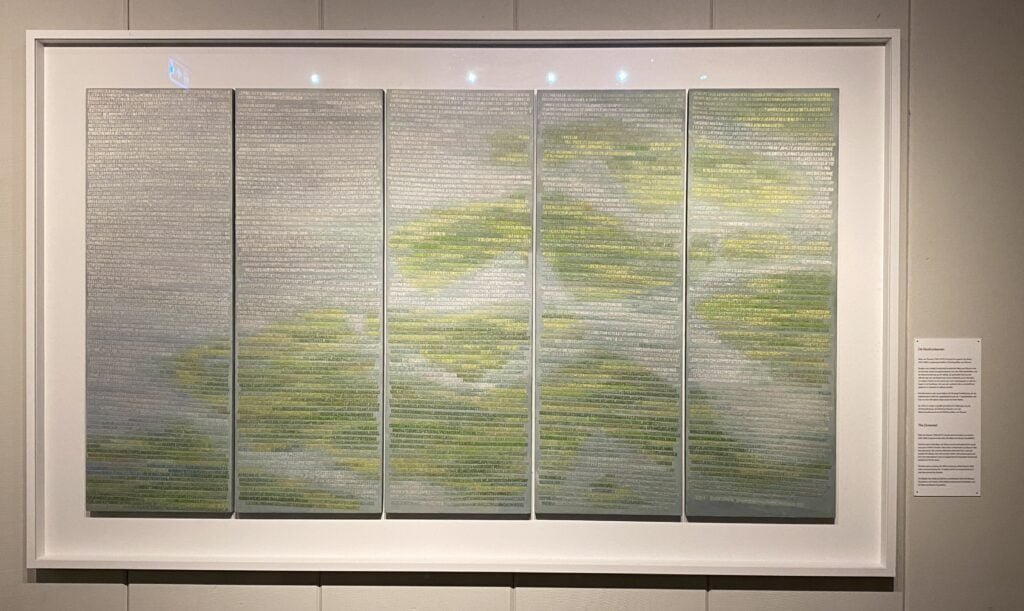
Via Reinder “This fantastic piece of textile art by Miep van Riessen consists of embroidered names of victims, and is at the same time a quite adequate ‘geographical impression’ of the region where the disaster took place: the Dutch province of Zeeland. “
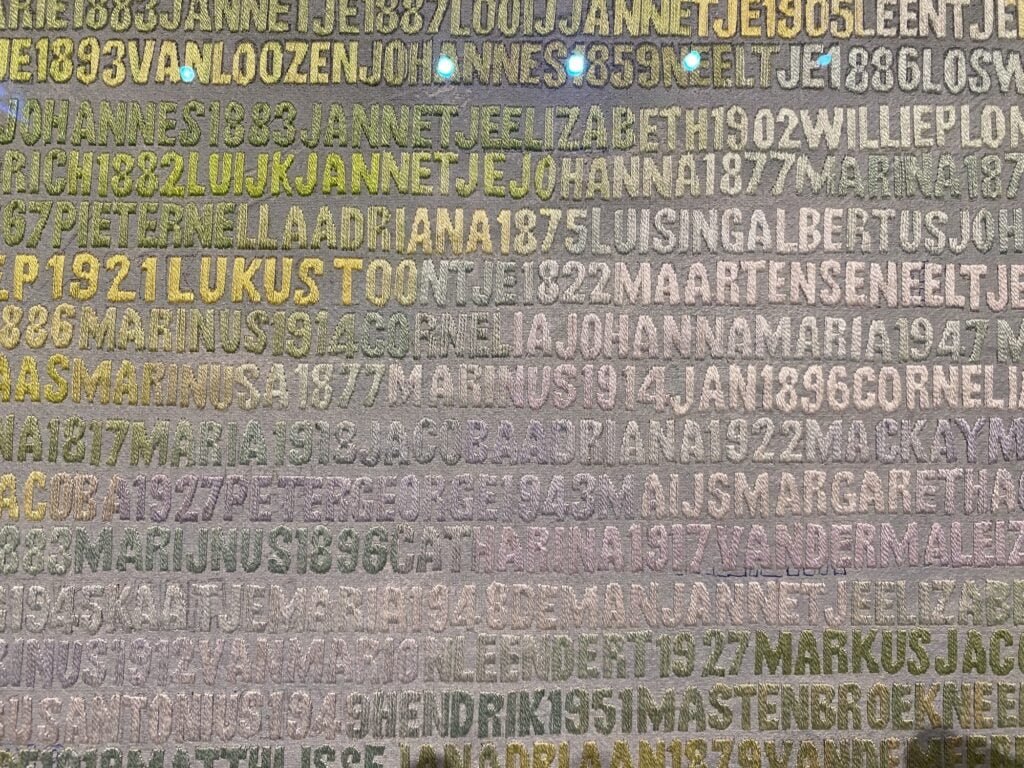
MapsintheWild Watersnood 3
-
sur Mappery: Watersnood 2
Publié: 3 August 2024, 11:00am CEST
-
sur Exploring London Through the Artist's Eye
Publié: 3 August 2024, 10:33am CEST par Keir Clarke
"... this tide is always moving! Always! When all those people we now see in such activity are in their graves, the same hurried activity will still continue here ..." - Hans Christian AndersenWhen Hans Christian Andersen visited London in June 1847 he was obviously impressed by the pace of London life. In his autobiography he called the English capital,"London, the city of cities! ... Here is
-
sur GeoServer Team: Using Binary Comparison Operators in GeoServer Filters
Publié: 3 August 2024, 2:00am CEST
GeoSpatial Techno is a startup focused on geospatial information that is providing e-learning courses to enhance the knowledge of geospatial information users, students, and other startups. The main approach of this startup is providing quality, valid specialized training in the field of geospatial information.
( YouTube | LinkedIn | Facebook | X )
Binary Comparison Operators in GeoServer FiltersIn this session, we want to talk about the various types of filters, with a particular focus on “Binary comparison operators in GeoServer” comprehensively. If you want to access the complete tutorial, click on the link.
IntroductionFiltering allows the selection of features that satisfy a specific set of conditions. Filters can be used in several contexts in GeoServer:
- In WMS requests, select which features should be displayed on a map
- In WFS requests, specify the features to be returned
- In SLD documents, apply different symbolizations to features on a thematic map
Note. This video was recorded on GeoServer 2.22.4, which is not the most up-to-date version. Currently, versions 2.24.x and 2.25.x are supported. To ensure you have the latest release, please visit this link and avoid using older versions of GeoServer.
Supported filter languagesData filtering in GeoServer follows the OGC Filter Encoding Specification, which provides a standard XML schema for encoding spatial, attribute, and temporal filters in GIS. This allows for customized queries to retrieve specific data from databases and web services while ensuring interoperability among GIS applications. GeoServer supports filters in both Filter Encoding Language and Common Query Language.
Filter Encoding LanguageThe Filter Encoding language, defined by OGC standards, utilizes an XML-based syntax to select specific features, similar to the “WHERE” clause in SQL. A filter consists of a condition formed by Predicate elements and Logical operators, employing comparison and spatial operators to evaluate relationships between feature properties. In this session, we will explore various types of binary comparison operators, while the next sessions will cover spatial operators.
Common Query LanguageCommon Query Language (CQL) is a Text-based language used in GeoServer for constructing filters and queries on geospatial data. It provides flexible and powerful options for filtering and retrieving specific subsets of data from GeoServer layers. In the upcoming sessions, we will dive into a detailed exploration of CQL/ECQL, covering its various operations and practical usage.
Comparison operatorsThese operators are part of Filter Encoding operators and are used in attribute-based queries to filter and retrieve specific features or data, based on their non-spatial attributes. The comparison operators include: binary comparison operators and value comparison operators.
The binary comparison operators are:
- PropertyIsEqualTo
- PropertyIsNotEqualTo
- PropertyIsLessThan
- PropertyIsLessThanOrEqualTo
- PropertyIsGreaterThan
- PropertyIsGreaterThanOrEqualTo
These operators contain two filter expressions to be compared. The first operand is often a
<PropertyName>, but both operands may be any expression, function or literal value. Binary comparison operator elements may include an optional matchCase attribute, with the true or false value. The default value is true, but the comparisons do not check the case if the attribute has a false value.Note. String comparison operators are case-sensitive.
PropertyIsEqualToPropertyIsNotEqualTo is a common type of filter used in GeoServer, which allows you to retrieve features from a data source based on the values of one or more properties. As an example of using this filter in WFS getFeature request:
- Navigate to the Demos page, then select Demo requests.
- From the Request section, select the WFS_getFeature1.0.xml request.
- The address will be filled in automatically, in the URL section.
Use the following block codes to replace line 26:
<PropertyIsEqualTo> <PropertyName>STATE_NAME</PropertyName> <Literal>Delaware</Literal> </PropertyIsEqualTo>- Now, we will explain some elements:
- The first fifteen lines include explanations in the form of comments.
- Line 16 describes the XML version and the GetFeature operation of the WFS service being used.
- Line 17 specifies the default output format for the WFS service as “gml2.” Additionally, GeoServer supports several other commonly used formats such as “gml3, shapefile, geojson, and csv.”
- Lines 18 to 23 define the start of the XML request and declare the namespaces used in the request.
- Line 24 specifies the type name of the feature to be queried. In this case, it requests features of the “topp:states”.
- Lines 25 to 30 define the filter criteria for the query. On these lines, we use the PropertyIsEqualTo filter, to retrieve all features where the state name attribute is equal to
Delaware.
-
Press the Submit button to see the implemented changes.
- Note. For GeoServer 2.25.2 the Demo Request page has been improved to show response Headers, and provide the option to pretty print XML output.
PropertyIsNotEqualTo is another common type of filter used in GeoServer, which allows you to retrieve features from a data source based on properties that don’t match a specified value. As an example of using this filter in a WFS getFeature request, use the following block codes to replace lines 26 to 29:
<PropertyIsNotEqualTo matchCase="false"> <PropertyName>STATE_NAME</PropertyName> <Literal>delAwarE</Literal> </PropertyIsNotEqualTo>Note. The matchCase attribute in WFS_getFeature 1.1 and 2.0 versions, can be set to “false” to specify a case-insensitive comparison.
Press the Submit button.
In this example, we used the
PropertyIsLessThan<PropertyIsNotEqualTo>filter to retrieve all features where theSTATE_NAMEattribute, is not equal toDelaware.The PropertyIsLessThan filter is used to filter features, based on a comparison of a numeric property with a given value. It returns all features where the specified property is less than the specified value.
An example of using this filter in a WFS getFeature request is:
outputFormat="shape-zip" <wfs:Query typeName="topp:states"> <wfs:PropertyName>topp:STATE_NAME</wfs:PropertyName> <wfs:PropertyName>topp:LAND_KM</wfs:PropertyName> <ogc:Filter> <PropertyIsLessThan> <PropertyName>STATE_FIPS</PropertyName> <Literal>18</Literal> </PropertyIsLessThan> </ogc:Filter>Press the Submit button.
In this example, we used the
<PropertyIsLessThan>filter to get all features in a shapefile format where the value of theSTATE_FIPSattribute is less than18. The query only retrieves theSTATE_NAMEandLAND_KMfields, instead of all the attributes.In this session, we took a brief journey through the various types of filters, with a particular focus on “Binary comparison operators in GeoServer”. If you want to access the complete tutorial, simply click on the link.
-
sur From GIS to Remote Sensing: Semi-Automatic Classification Plugin major update: version 8.3.0
Publié: 3 August 2024, 12:04am CEST
The Semi-Automatic Classification Plugin (SCP) has been updated to version 8.3.0.This new version requires Remotior Sensus to be updated to at least version 0.4.0.
During the update process of SCP from version 7 to version 8, several tools were excluded in order to give priority to the main plugin functions.With this 8.3.0 update, several tools are reintroduced, such as Clustering tool for unsupervised classification (K-means method), the Spectral distance tool, the Edit raster tool, and the Raster zonal stats.Read more » -
sur WhereGroup: Kick-off für die Entwicklung eines bundesweiten Softwaretools für mehr Klimaschutz in der Baubranche
Publié: 2 August 2024, 12:15pm CEST
Schon 2016 waren wir auf Landesebene im Bereich Ersatzbaustoffverordnung tätig und sind nun vom BMUV mit dem Umweltbundesamt mit der Erstellung eines bundesweiten Ersatzbaustoff-Katasters beauftragt. -
sur GRASS GIS: Report from the GRASS Community Meeting 2024
Publié: 2 August 2024, 11:42am CEST
The annual GRASS GIS Community Meeting was held once again in the Czech Republic, this time at the NC State European Center in Prague from June 14 to 19. The meeting brought together users, supporters, contributors, power users and developers to collaborate and chart the future of the project. Thanks to the generous funding from the U.S. National Science Foundation (Award 2303651), the Open Source Geospatial Foundation (OSGeo), FOSSGIS e.V., and individual donors, we were able to welcome 16 in-person participants from 9 countries on 3 continents, plus 2 remote participants. -
sur Mappery: Watersnood 1
Publié: 2 August 2024, 11:00am CEST

Reinder shared this “On the 1st of February 1953 a disastrous flood occurred in the southwest of The Netherlands. More than 1800 people lost their lives and an entire infrastructure was devastated. This is known as the Watersnood, and it is the topic of the Watersnoodmuseum in Ouwerkerk in the province of Zeeland.”
MapsintheWild Watersnood 1
-
sur The Olympic Medals Map
Publié: 2 August 2024, 9:20am CEST par Keir Clarke
In the past seven days you've almost definitely seen numerous tables of Olympic medal winners. Now it is time to view the map.Giorgio Comai creates interactive maps of Olympic Medal winners based on which NUTS region they were born in. This means that you can look past the traditional country led rankings used in most Olympic medal tables to explore the medals won by different regions.
-
sur Mappery: Custom underwear
Publié: 1 August 2024, 11:00am CEST
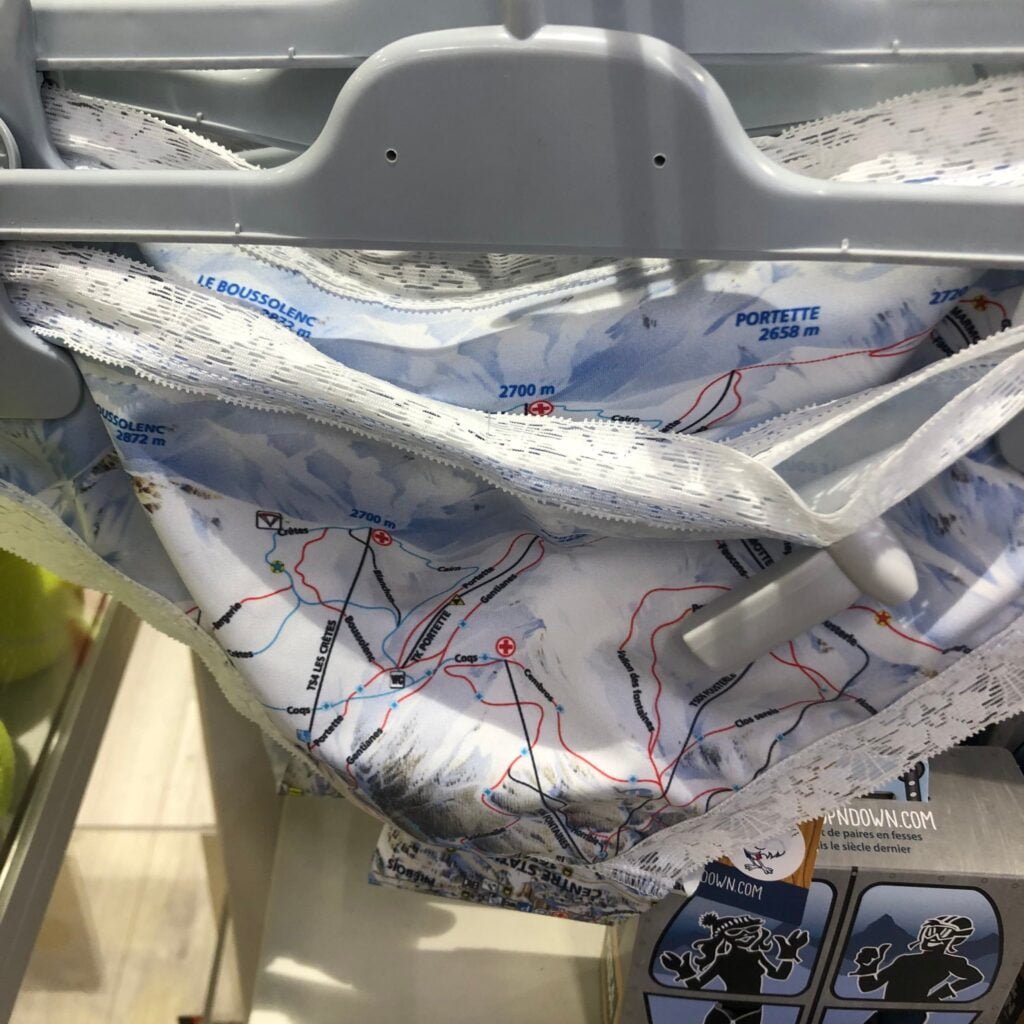
And a new share from LeCatopgrahe with these custom underwear coming from Hop & Down.
MapsintheWild Custom underwear
-
sur 170 Years of American Immigration
Publié: 1 August 2024, 8:54am CEST par Keir Clarke
The Pew Research Center has analysed census data to map the changes in the immigrant population over the last 170 years. An animated map in How America’s source of immigrants has changed over time shows the top country of birth of immigrants in each state from every census since 1850 (except 1890 - the census data for this year was destroyed in a fire).The animated map clearly illustrates the
-
sur GeoServer Team: GeoServer User Forum replaces mailing list
Publié: 1 August 2024, 2:00am CEST
GeoServer is updating our communication channels!
We know people do not like signing up for mailing lists, Twitter has been Xed out, and it is time to move on.
GeoServer User ForumWelcome to the GeoServer User forum:
- This forum is open to the public, we are pleased to meet you and hope you enjoy using GeoServer.
- Hosted by Open Source Geospatial Foundation
- All project communication including this forum are subject to our code of conduct
- This is one of many options for community support and communication.
Taking part is easy (sign-in with credentials you already have):
-
Login to discourse.osgeo.org:
-
Login “with LDAP” to use your OSGeo UserID (also used for other osgeo services).
The button appears greyed out, but this is only poor styling choice. The button is enabled and works.
-
Use “Log in with GitHub” to use GitHub credentials.
-
More options are added over time.
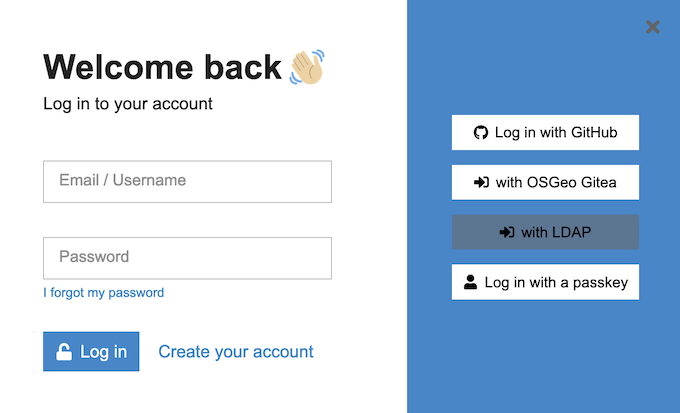
-
-
You may also use “Sign Up” if you want to create an account just for use with the Forum.

-
Unsubscribe from geoserver-users email list.
We will continue to operate the geoserver-user list for the month of August, and then do a final synchronization of any outstanding email messages to complete the migration.
-
Navigate to the category GeoSever / User to enjoy the forum.
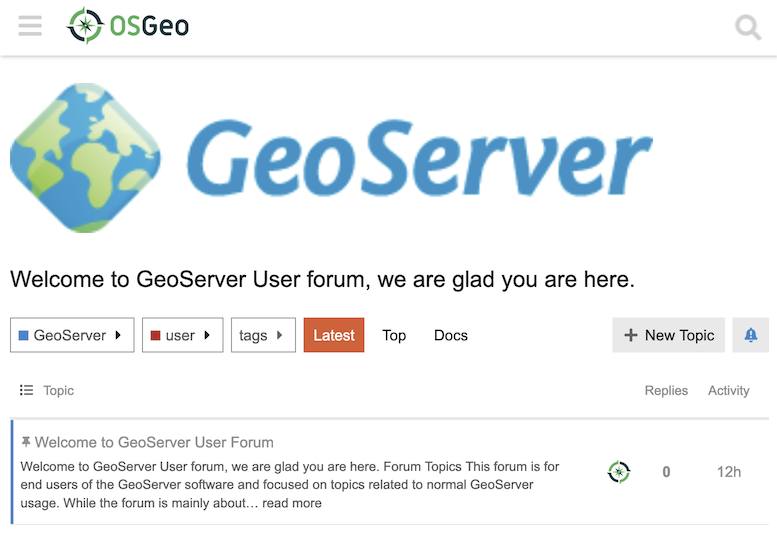
-
Use New Topic to start a new conversation.
Only the
GeoServer / usersubcategory allows new topics. If the New Topic button is disabled you may be looking at theGeoServertop-level category. -
To test please send introduce yourself we are looking forward to meeting you.
If you enjoy the out-of-band timezone friendly mailing list experience - Discourse allows you to subscribe to notifications, and use email to post and reply to topics.
-
Sign-in to Discourse as above.
-
From your profile preferences, use the email tab to adjust email settings.
IMPORTANT: Email is only sent when you are not logged in to the discourse website!
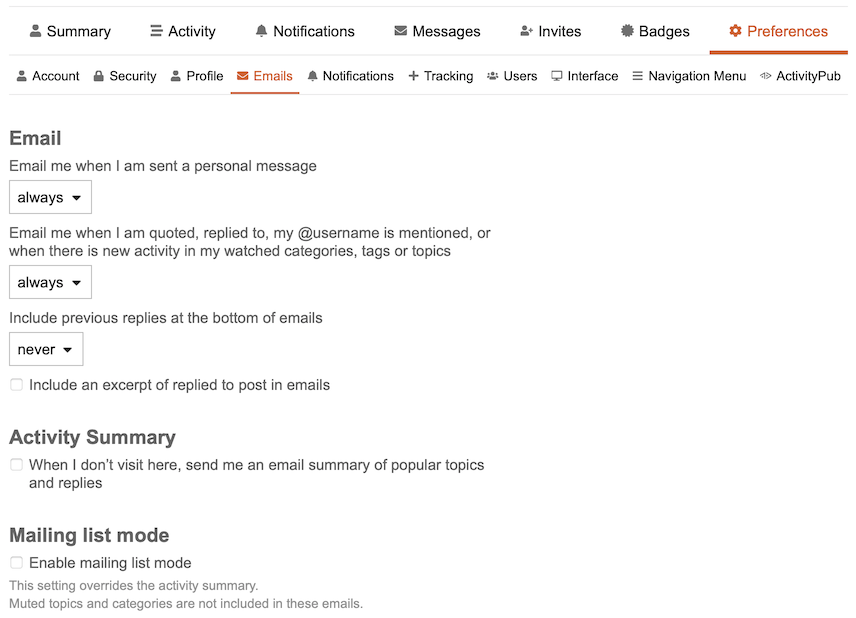
-
Navigate to GeoSever User category, and use the bell to change notifications to Watching.

-
If you wish to update any email rules the new mailing is
user.geoserver.discourse.osgeo.org -
You can send email to geoserver-user@discourse.osgeo.org to start a new topic.
To test please send an email to introduce yourself (rather than a test message).
GeoServer is occasionally active on social media:
- Mastadon: @geoserver@fosstodon.org
- LinkedIn Group
- Twitter/X: @GeoServerO - only used for emergencies.
If you enjoy social media we would love some assistance reposting and highlighting our community activity. Contact us on your preferred social media platform to help out.
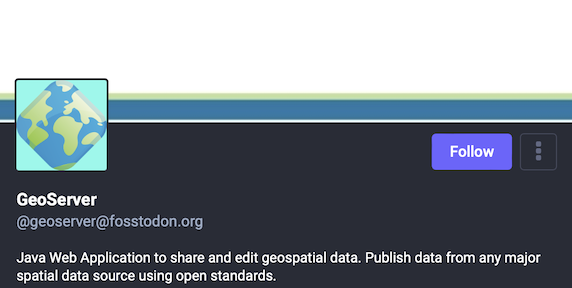
-
sur Mappery: World T-Shirt
Publié: 31 July 2024, 11:00am CEST
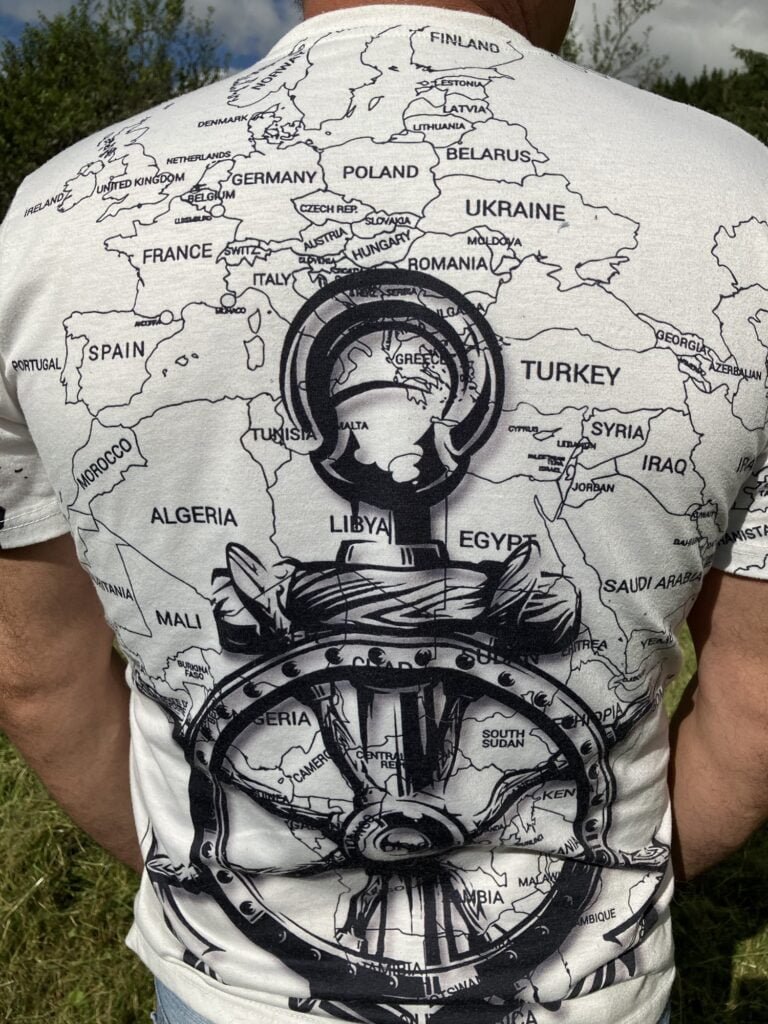
How a mechanical issue leads to a new map in the wild. Back home, I had a problem with a lawn mower. I called a friend for help, who finally came with this fabulous T-shirt!
MapsintheWild World T-Shirt
-
sur The Best Graphics Team in the World
Publié: 31 July 2024, 8:39am CEST par Keir Clarke
The Straits Times has the best graphics department in the world - probably. The Washington Post and New York Times might be contenders but because of their paywalls most of their work is hidden away from most of the world.The latest astonishing demonstration of the graphic skills of the Straits Times comes in an article celebrating the 100 year anniversary of the construction of the
-
sur GeoSolutions: GeoSolutions Announces Membership in World Geospatial Industry Council
Publié: 30 July 2024, 6:19pm CEST
You must be logged into the site to view this content.
-
sur Mappery: Cup Cakes from Mont-Ral
Publié: 30 July 2024, 11:00am CEST
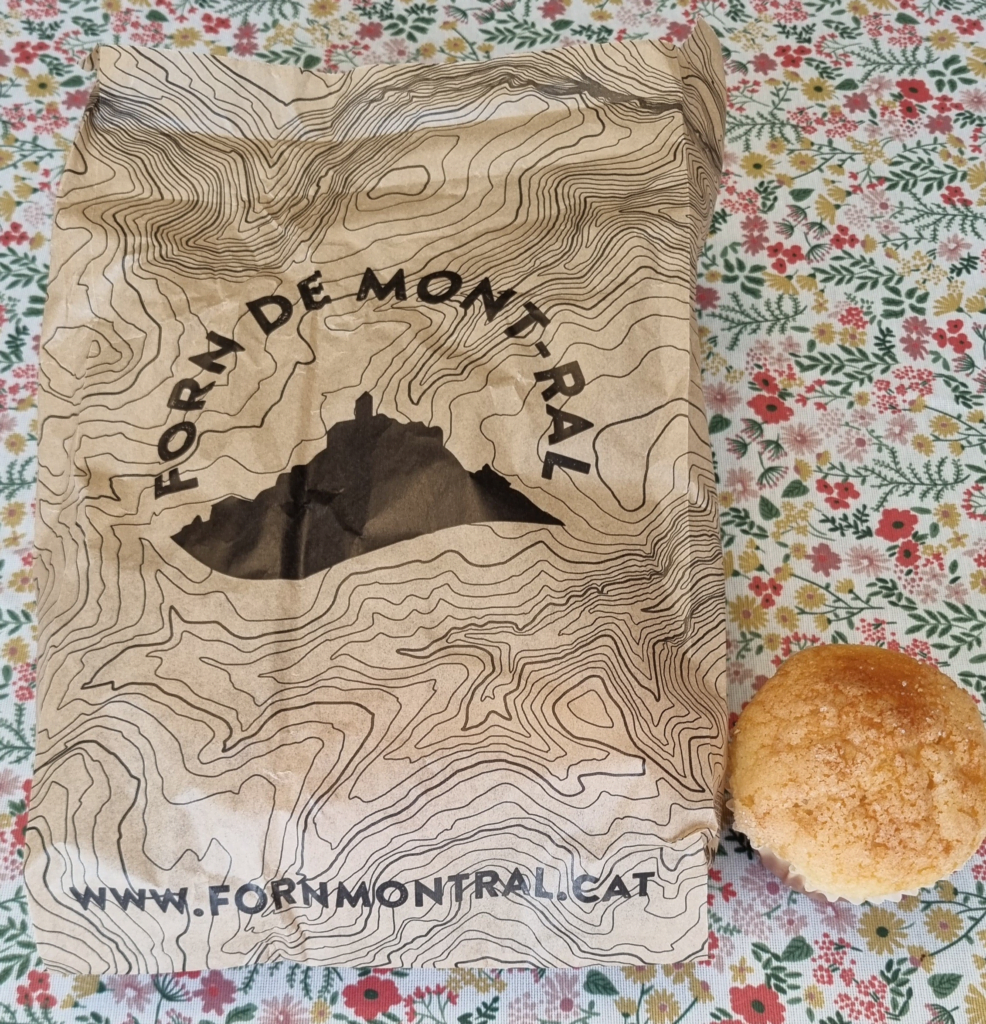
Raf shared this “Tasty cupcakes from Forn de Mont-ral, Prades, Catalunya”
MapsintheWild Cup Cakes from Mont-Ral
-
sur Rat-Town, Massachusetts
Publié: 30 July 2024, 10:36am CEST par Keir Clarke
A new interactive map of Boston seems to indicate that Beantown has become Rat-town. Rats! Boston shows rat sightings around the Massachusetts city made by concerned citizens.Self-appointed Rat Czar Viviano Cantu is using 311 reports to map all the recent sightings of rats around Boston. The sightings are taken from non-emergency 311 calls to the city. The Rats! Boston map also shows the
-
sur Markus Neteler: Happy 41st birthday, GRASS GIS!
Publié: 29 July 2024, 11:01am CEST
Today, we celebrate a true geospatial legend: GRASS GIS!
The post Happy 41st birthday, GRASS GIS! appeared first on Markus Neteler Consulting.
-
sur Mappery: Panorama of New York City
Publié: 29 July 2024, 11:00am CEST
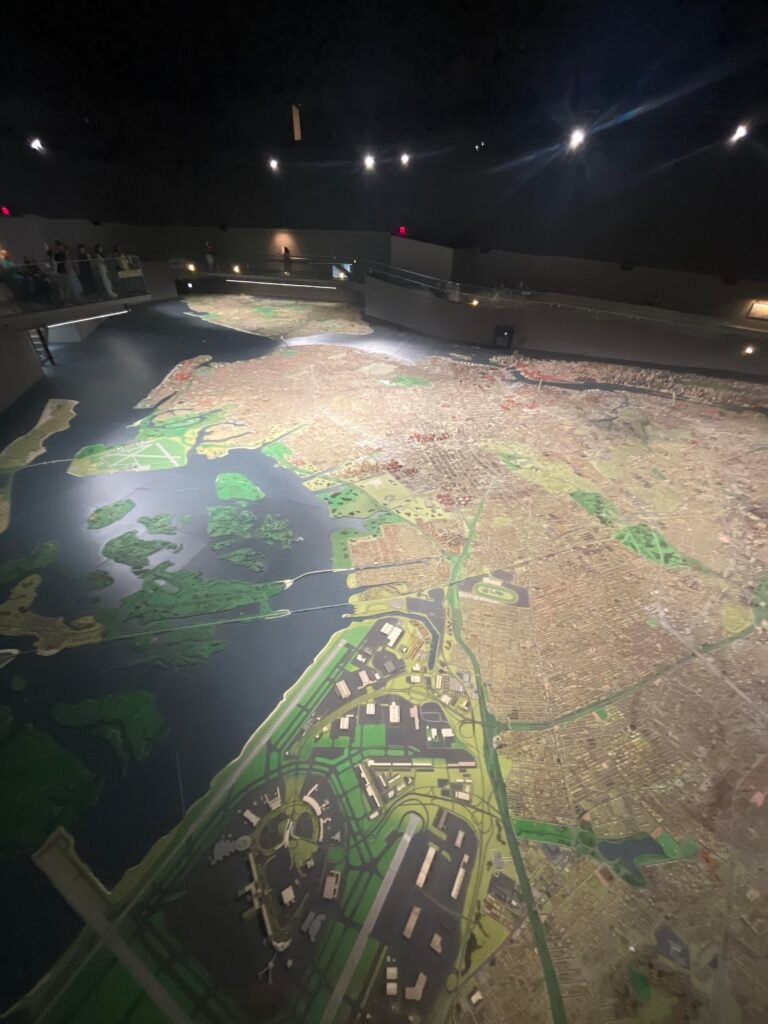
Tom MacWright shared this picture of the Panorama of the City of New York, an urban model of New York City and the centrepiece of the Queens Museum. For more information, click here.
MapsintheWild Panorama of New York City
-
sur AI-Powered Satellite Search
Publié: 29 July 2024, 9:21am CEST par Keir Clarke
Clay Explore is an interactive map demo of a new open-source AI Earth observation model. The map allows you to search aerial imagery of Southern California, Seoul and Puerto Rico using machine learning.Using Clay Explore you can click on any map tile or draw an area to search the map for similar looking areas. Each of the three searchable maps (Southern California, Seoul and Puerto Rico) comes
-
sur Mappery: Sorgenfri
Publié: 28 July 2024, 11:00am CEST
-
sur GRASS GIS: GRASS GIS 8.4.0 released
Publié: 27 July 2024, 11:42am CEST
What’s new in a nutshell The GRASS GIS 8.4.0 release contains more than 520 changes compared to 8.3.2. This new minor release includes important fixes and improvements to the GRASS GIS tools, libraries and the graphical user interface (GUI), making it even more stable and robust for daily work. Most importantly: location becomes project: The Python API, command line, and graphical user interface are now using project instead of location for the main component of the data hiearchy while maintaining backward compatibility. -
sur Mappery: Bed sheets
Publié: 27 July 2024, 11:00am CEST
-
sur The US Road Fatality Map
Publié: 27 July 2024, 9:03am CEST par Keir Clarke
Last week I posted a link to the NYC Congestion Zone Live Crash Tracker, an interactive map of car crashes in New York City. If you live outside of New York then you might prefer Roadway Report instead, which is a visualization of American roadway fatalities in the 21st Century.The Roadway Report map uses road traffic accident data from the National Highway Traffic Safety Administration's
-
sur Mappery: Do not mix dishcloths and napkins
Publié: 26 July 2024, 11:00am CEST

This is literally what I thought when I saw this picture. The sentence makes sense for a French speaker; the English version would be: not mix apples and pears, but I also found apples and oranges. Always happy to learn the usage if you want to comment on our socials.
Anyway, my title is misleading about the subject; the picture shows handkerchiefs from Chris Chambers.
MapsintheWild Do not mix dishcloths and napkins
-
sur Mapping Power Outages in Kiev
Publié: 26 July 2024, 10:29am CEST par Keir Clarke
The Map of Power Outages in Kiev visualizes power outage schedules in the Ukrainian capital. Due to Russia's ongoing attacks on power stations in Ukraine the electric power company Yasno has to schedule times of planned power outages. The Map of Power Outages in Kiev uses this schedule to provide an interactive map at the individual building level of these scheduled power outages.It is -
sur Your Daily Map Trivia Game
Publié: 25 July 2024, 2:03pm CEST par Keir Clarke
TripGeo Trivia is a new daily geography quiz which requires you to identify ten cities based on a number of clues. Every day ten new random cities from around the world need to be identified. To help you in this task you can view three clues as to the identity of each city.Every day you get to identify ten new cities. For each city you get three clues and a choice of possible answers. Using the
-
sur Mappery: Bowtie
Publié: 25 July 2024, 11:00am CEST
-
sur GeoSolutions: MapStore 2024.01 Series of releases
Publié: 25 July 2024, 9:07am CEST
You must be logged into the site to view this content.
-
sur The Catalan GeoGuessing Game
Publié: 25 July 2024, 7:33am CEST par Keir Clarke
Developer Toni Vidal has released a new GeoGuessr inspired game featuring photographs of the stunning and diverse landscapes of Catalonia. His Geoendevina game simply requires you to guess the locations of a series of photos taken in the Catalonia region of Spain.The rules of Geoendevina are very simple. In each round of the game you are presented with a different photograph, each of which
-
sur WhereGroup: Erweiterte Geodatenvisualisierung mit MapComponents
Publié: 24 July 2024, 1:40pm CEST
Die MapComponents-Bibliothek ermöglicht die Anzeige und Integration verschiedener Datenformate direkt im Browser. Anhand eines praktischen Beispiels wird gezeigt, wie Benutzer OpenStreetMap-Daten in eine Webanwendung laden und diese anzeigen lassen können. -
sur Mappery: Coaster
Publié: 24 July 2024, 11:00am CEST
-
sur Tracking American Spies in Germany
Publié: 24 July 2024, 8:24am CEST par Keir Clarke
Bayerischer Rundfunk and netzpolitik have carried out a joint investigation into how our location data is for sale across the world. These days nearly everyone voluntarily carries around their own personal tracking device in the form of a smartphone. These devices record our movements all day long. What most people don't know is that their location data is openly being sold by global data
-
sur Jorge Sanz: Elastic Volunteering Time Off
Publié: 23 July 2024, 11:15am CEST

My employer, Elastic, has a number of philanthropic initiatives but definitely the one I love the most is the Volunteering Time Off (VTO). We are given 40 hours per year from our working hours to contribute to projects and initiatives we care about. Employees have full freedom to choose what they want to do with that time and are encouraged to use it.
In my case, over this almost 5 years I have to admit I haven’t used all that time every year but I tried to get the most of it. During COVID I did some remote work for a local NGO that works for fair trade, giving them a webinar about Open Source among other things (see update from December 2019 and following months). I also spent a few days working on some admin tasks for the Open Source Geospatial Foundation and I’ve already written here about a couple sessions I did for Cibervoluntarios, training seniors and teens about safe browsing and email.
Last week I was showcased in the company blog, along with other colleagues, on different projects to contribute to. In my case, last year I joined the mapping efforts after the Morocco Earthquake and took a full day mapping roads and streets of a rural area, as part of the coordinated efforts from the Humanitarian OpenStreetMap team (reported on my October community update). I’m very happy to have this support from my employer to leave things aside when an emergency like this arises, granted there are no other urgent issues at work.
As a personal call to action, I’d love to get back to Cibervoluntarios activities. This year has been quite busy; let’s see after summer if there’s room for getting out and engaging with them.
I know I haven’t updated this site in a while, I’ll write one soon! ?
-
sur Mappery: Geodesic point
Publié: 23 July 2024, 11:00am CEST
-
sur The Retro Gamer's Map
Publié: 23 July 2024, 10:04am CEST par Keir Clarke
The Retro.Directory is an interactive map which shows the locations of venues related to retro gaming. These include gaming museums, arcades, cafes, bars, clubs and repair services. The map is designed to help retro gaming enthusiasts discover retro-themed locations nearby and around the world.I am so old that I can actually remember a time before computer games. I can remember the amazing
-
sur QGIS Blog: Introducing the new QGIS.org website
Publié: 23 July 2024, 9:00am CEST
We have a new website!
We recently launched our new website at QGIS.org. It is a ground-up overhaul and provides a fresh take on the first contact point for existing or potential users wishing to engage with the QGIS project and discover its value proposition.

A new strategy for QGIS.org websites
In this blog post, we would like to provide an overview of the goals that we had for building the new QGIS.org website and the bigger picture of how this website update fits into the broader strategy for our website plans for QGIS.
About two years ago, we started experimenting with building a new QGIS.org website based on Hugo. Hugo, as a technology choice, was less important than was our intent to develop a more modern site that addressed our strategic goals.
After some ‘in-house’ (i.e. volunteer-based) work to develop an initial version of the site, we received the go-ahead to use QGIS funds for this and put out a call in October 2023 for a company to support our work. This was ultimately won by Kontur.io, who, together with our volunteers, brought the work into high gear.
 Initial analysis of the questions and actions to be quickly answered by qgis.org
Initial analysis of the questions and actions to be quickly answered by qgis.org
Goal 1: Speak to a new audience
Our primary goal was to speak to a new audience. We are confident that QGIS can compete with all of the commercial vendors providing GIS software. We didn’t convey that well on our old website. We feel that QGIS was too apologetic in how it presented itself. We wanted a website which inspires confidence while addressing the needs of a corporate or organisational decision-maker who is looking at the QGIS project during their GIS software selection process.
The old website was very focused on the developer and contributor community. Obviously, those aspects are important since, without our fantastic community, the QGIS project would not exist. The messaging around open source is also important. Yet these ideas are secondary to the idea that QGIS is one of the best (if not the best) desktop GIS applications out there on the market – open-source or otherwise. We need to present it in this professional perspective.
So, the first goal was to change the messaging to focus on QGIS’s value proposition and take a very professional approach to presenting ourselves on the website.
 User group and requirements analysis for the potential qgis.org visitors
User group and requirements analysis for the potential qgis.org visitors
Goal 2: Harmonisation
The second goal was to start the process of harmonising all of our website properties. QGIS.org, over the years, has built many different web properties. For example, there’s the plugins website, the feed, the changelog, the sustaining members website, the lessons website and the certification website, the new resources hub website, the API documentation, the user documentation, the user manual, the training manual, various other documentation efforts, and more. Some of those are combined in one application, There are also some less well-known resources, like our analytics.qgis.org and another one for plugin analytics. In short, we’ve a lot of resources!
With so many different web properties, they’ve devolved over time: each has its own look and feel, navigation approach and how you interact with it. Some of them were translated, and some of them were not. We want to harmonise all of these sites so that the user does not notice any change in user experience when they move from one QGIS-related site to another.
Goal 3: Harmonising deployment
In the underlying process of these changes, we’re also redeploying all of the websites on new servers, which are more up-to-date and use better security and maintenance practices. Plenty of work is happening in the background to ensure that all of the servers are in a better-maintained state, document how they’re maintained, and so on.
Goal 4: A hub and spokes
The objective of the new site design is to allow quick movement between the QGIS auxiliary sites. The QGIS.org site will form a hub that effortlessly takes visitors to whichever QGIS-related site they need to complete the task they are busy with. If you’re moving between these sites, the experience should be seamless. You should not really even be aware that you’re moving between different websites. Other than looking at the URL bar, the user presentation and experience should be harmonious between all of them.
One way we are planning to achieve this is to have a universal menu bar and footer. You will see that in the new website’s design, there is a menu bar across the top. This menu bar has two levels: the top menu and the second level, where the search bar is.
 The universal menu bar
The universal menu bar
In this second row, auxiliary sites will have their own sub-menu whilst keeping the shared top-level menu. So if you, for example, are moving around in plugins and want to review the plugin list or submit a new plugin, all of that navigation will be on the second line where the search bar is currently. Regardless of which subdomain you are on, the top-level menu bar will be the same, allowing you to easily navigate back to the hub or to another subdomain.
The footer will be unified and shared between all sites, and the cascading style sheets and styling will be unified across all of the QGIS websites.
In the next phase, we will work to achieve this coherence across all the websites, though we still have a few more tweaks to make to the qgis.org site first.
Goal 5: DOTDOTW – do one thing, do one thing well
We plan to break some auxiliary websites apart into separate pieces. So, for example, the changelog management, certification management, sustaining members management, and lessons management are all in one Django app. We will split them into small single-purpose applications using some common UX metaphors so that each is a standalone application that makes it easy for a potential contributor to understand everything the application does. This will also simplify management as we can upgrade each auxiliary site on separate development cycles. We will also finally have semantic URLs, e.g. certification.qgis.org, to take you to the different areas of interest on the site.
The plugins.qgis.org is also going to be refactored so that it just has plugins and not the resource sharing we’ve added in the last few years. The resource sharing will go into its own subdomain. Similarly, the Planet website will get split into its own website (the planet is a blog aggregator or RSS aggregator) that will be in its own managed instance. Some other components (like the analytics) are difficult to split out like this because they’re linked to the same database. We will try to make sure that those are more discoverable and theme them as much as possible to match the rest of the website experience.
Goal 7: Encapsulation

Another goal we had for the QGIS.org makeover was to make the site performant and self-contained. By self-contained, we mean that it should not ‘call’ out to CDN, Google or other platforms for resources like fonts, CSS frameworks, javascript libraries, etc. There were two reasons for this:
- These platforms often use such resources to track users as they move around the Internet, which we want to avoid as much as possible.
- We want to wholly manage our site, be able to fix any issues independently and generally follow a path of self-determination.
Our approach also facilitated the creation of a very performant website, as you can see here. We will try to adhere to these principles for the auxiliary site updates we do in the future, too.
What about translations?The question has come up: Why did we not want to translate the new QGIS.org when it was translated before?
Firstly, we should make it clear that we do not plan to remove translations from the user documentation, the user manual, and so on, where we think they have the most value.
For the main QGIS.org site, we question whether there is a high value in translating it. Here are some reasons why:
1. Lingua franca: If you are an IT manager in a non-English-speaking country and you want to evaluate some software, you’re going to run into a product page that presents itself in English – it is the norm for IT procurement to work in English for reviewing software products and so on.
2. Automation: Automated translations inside browsers are getting better and better. While these translations are still not completely adequate, we think they will be in one or two years’ time.
3. Translation integrity: Our pursuit of Goal 1 means that we would no longer find it acceptable to have partial website translations. We also need to ensure that the wording and phrasing are consistent with the English messaging. We also have concerns about the QA process regarding trust and review – we want to ensure that any translation truly reflects the meaning and intent of the original content and has not been adjusted during the translation process.
4. Cohesion: Our most important point is raised if we go back to this idea of cohesion between the different websites like QGIS.org, plugins.qgis.org and so on. As well as having the same styling, we also don’t want to switch between languages as you hop between the sites. We aim to present them all as one site. If we translate QGIS.org and then take you to our auxiliary sites, e.g., plugins.qgis.org, the feed, or certification pages, which are in English only, the experience is jarring.
So we must either translate everything into all of the same languages, or work in English. Translating everything is a mammoth task for the translators and for us to retrospectively add translation support to each platform. Thus, we prefer the approach of harmonising everything to one language and then focusing our translation efforts on three areas:
- The application itself,
- the user manual and
- the training manuals.
We can leave the rest of the experience in English and instead focus on harmonising, for now, both in terms of look and feel and the technology used.
When we consider everything as one big website and what the bigger plan is, it is hopefully clearer why we didn’t think translating the landing page and QGIS.org was the best approach.
Further funded workWe hope to use more QGIS funding to support this work in the future. We’re also hoping to work again with Kontur to start moving all these auxiliary sites into their own projects, applying our style guidelines to each. Independently of that, Tim (volunteer), Lova (QGIS funded), and others are already getting started with this process.
Helping outDo you have strong opinions about the website? Contact Tim on the PSC mailing list if you would like to get involved as a volunteer. We would love to hear from designers, word smiths, marketers, information architects, SEO specialists, web developers and those who think they can help us achieve our goals.
ConclusionWe hope our goals and process make sense for everybody and that we were able to lay out a clear, logical argument about why we don’t want to translate the new website quite yet. We want to focus on these overarching goals and then return to them later if they are still a priority for people. Everything we have built is Open Source and available at this repo, where you can also find an issue tracker to report issues and share ideas relating to the new website.
Thanks for reading. Go spatial without compromise


Cheers, Tim, Marco and Anita
-
sur SourcePole: Adding external WMS to the QGIS Cloud Web Map
Publié: 23 July 2024, 2:00am CEST
The use of WMS/WMTS layers in a QGIS Cloud map project can significantly degrade the performance of the map display. I have already discussed how to counter this problem in an earlier post. One of the solutions is to load external WMS as background layers. The problem with this approach, however, is that only one WMS background layer can be loaded at a time. If further WMS layers are to be loaded into the map at the same time, this approach cannot be used. -
sur Mappery: Wallpaper
Publié: 22 July 2024, 11:00am CEST
-
sur Virtual Reality OpenStreetMap
Publié: 22 July 2024, 8:19am CEST par Keir Clarke
osm4vr is a virtual reality world built using OpenStreetMap map tiles and building footprints. Using osm4vr with a VR headset you can explore the world in virtual reality. Alternatively, if you don't have access to a headset you can simply fly around the world in your browser instead.Most of the 3d buildings are created using OSM building footprints with building heights, so the graphics can be
-
sur GeoServer Team: GeoServer 2024 Q3 Developer Update
Publié: 22 July 2024, 2:00am CEST
This is a follow up to 2024 roadmap post outlining development opportunities.
First of all thanks to developers and organisations that have responded with offers of in-kind contributions. This blog post is assessing current progress and outlines a way forward to complete the Java 17/Jakarta EE/Spring 6 upgrades.
This post highlights development activities that are available to be worked on today, along with interested developers and commercial support providers available to work on GeoServer roadmap items.
Spring Framework 6 TasksThe key challenge we are building towards is a spring-framework 6 update, ideally by the end of 2024 when the version we use now reaches end-of-life.
The tasks below are steps towards this goal.
Wicket 9 upgradeInterested Parties:
- Brad has been doing amazing work with the Wicket 9 upgrade and is in need of assistance.
- GeoCat has offered to do manual A/B testing when PR is ready for testing.
Activity:
- [GEOS-11275] Wicket 9 upgrade
- geoserver#7154
Spring Security 5.8 provides a safe stepping stone ahead of the complete spring-framework 6 upgrade and is an activity that can be worked on immediately.
Interested parties:
- Andreas Watermeyer (ITS Digital Solutions) offered to work on this activity in during the initial January call out, and has indicated they are now ready to start.
Activity:
- [GEOS-11271] Upgrade spring-security to 5.8
The spring-security-oauth client has reached end-of-life and a GeoServer OAuth2 support must be rewritten or migrated as a result.
There are two paths to migrate to spring-security-core implementation:
-
Option: Migrate the existing community module implementations to spring-security-core in place; with as little loss of functionality as possible. This has the advantage of using existing test coverage to maintain a consistent set of functionality during migration.
-
Option: Setup a community module alongside the existing implementation with the goal of making a full supported etension. This approach has the advantages of allowing organisations the ability to do A/B testing as both the old and new implementation would be available alongside each other. This has the advantage of allowing stakeholders to only fund, implement, test functionality as required without disrupting existing use.
Security integrations often require infrastructure to develop and test against, which the core GeoServer team does not have access to for automated tests. We would like to see organisations review their security integration requirements and be on hand to support this development activity.
The initial priority will support for OAuth2 and Open ID Connect (OIDC), parties interested in maintaining support for Google, GeoNode, GitHub are welcome to participate.
Interested Parties:
- Andreas Watermeyer (ITS Digital Solutions) offered to work on this activity, or test as needed.
- GeoCat is interested in this work also, with the goal of bringing the OIDC plugin up to full extension status (if financing is available).
Activity: not started
- [GEOS-11272] spring-security-oauth replacement, with spring-security 5.8
The image processing library used by GeoServer has been donated to the open source community under the name ImageN.
The immediate goal has been to add test cases to this codebase and make an ImageN 1.0 release. Andrea has come up with the amazing idea of integrating with JAI-Ext project immediately, to benefit from the improved operators, and jumpstart test coverage.
Interested Parties:
- Jody (GeoCat) is available to support this activity, or take lead if funding is available.
- Andrea (GeoSolutions) has had a deep dive into the implications for the JAI-EXT project outlining a roadmap for project integration
We would like to see organisations that depend on GeoServer for earth observation and imagery to step forward with funding for this activity.
2024 Financial support and sponsorshipThus far 2024 has not had a strong enough sponsorship response to support the project goals above. As a point of comparison we established a budget of $15,000 with OSGeo last year to take on an low-level API change that affected several projects.
This year GeoServer sponsorship has raised between $1,000 and $2,000 which is not enough to plan with or coordinate in-kind contributions offered thus far.
Jody has worked with the OSGeo board to make adjustments to the sponsorship:
- Guidance has been provided for appropriate sponsorship levels for individual consultants, small organisation, companies and public institutions of different sizes.
- There are clear examples of how to sponsor and donate, along with the the perks and publicity associated with financial support
- GeoServer has a new sponsorship page on our website collecting this information
- GeoServer now lists sponsors logos on our home page, alongside core contributors.
We would like to thank everyone who has responded thus far:
- Sponsors: How 2 Map, illustreets
- Individual Donations: Peter Rushforth, Marco Lucarelli, Gabriel Roldan, Jody Garnett, Manuel Timita, Andrea Aime
-
sur From GIS to Remote Sensing: Semi-Automatic Classification Plugin version 8.3 release date
Publié: 21 July 2024, 1:00pm CEST
This post is to announce that the new version 8.3 of the Semi-Automatic Classification Plugin (SCP) for QGIS will be released the 3rd of August 2024.This new version will require the new version 0.4 of the Python processing framework Remotior Sensus, and will include several new features such as such as clustering, raster editing and raster zonal stats.
For any comment or question, join the Facebook group or GitHub discussions about the Semi-Automatic Classification Plugin.
-
sur Mappery: Which projection is this?
Publié: 21 July 2024, 11:00am CEST

I found this nice geo license plate walking by the River Thames. Very geo-nerdy. Happy Sunday!
MapsintheWild Which projection is this?
-
sur From GIS to Remote Sensing: Remotior Sensus Update: Version 0.4
Publié: 20 July 2024, 3:41pm CEST
 I'm glad to announce the update of Remotior Sensus to version 0.4.This new version add several new features such as clustering, raster editing and raster zonal stats. Following the complete changelog:
I'm glad to announce the update of Remotior Sensus to version 0.4.This new version add several new features such as clustering, raster editing and raster zonal stats. Following the complete changelog:- Added tool "Band clustering" for unsupervised K-means classification of bandset
- Added tool "Raster edit" for direct editing of pixel values based on vector
- Added tool "Raster zonal stats" for calculating statistics of a raster intersecting a vector.
- Improved the NoData handling for multiprocess calculation
- In "Band clip", "Band dilation", "Band erosion", "Band sieve", "Band neighbor", "Band resample" added the option multiple_resolution to keep original resolution of individual rasters, or use the resolution of the first raster for all the bands
- In "Cross classification" fixed area based accuracy and added kappa hat metric
- In "Band combination" added option no_raster_output to avoid the creation of output raster, producing only the table of combinations
- In "Band calc" replaced nanpercentile with optimized calculation function
- Improved extraction of ROIs in "Band classification"
- Minor bug fixing and removed Requests dependency
-
sur Mappery: Corsica
Publié: 20 July 2024, 11:00am CEST
-
sur 10 Million Street Views
Publié: 20 July 2024, 9:01am CEST par Keir Clarke
Street-level imagery such as Google Maps Street View panoramas has become a pivotal resource for many researchers as it can provide a unique perspective on built environments. The ability to access and analyse comprehensive street-level imagery provides researchers with a powerful tool for exploring and understanding urban environments. Accessing comprehensive street level imagery at
-
sur GeoNode: Docs For Devs
Publié: 19 July 2024, 5:43pm CEST
GeoNode: Docs For Devs -
sur GeoNode: Translate
Publié: 19 July 2024, 5:43pm CEST
GeoNode: Translate -
sur GeoNode: Improve
Publié: 19 July 2024, 5:43pm CEST
GeoNode: Improve -
sur GeoNode: Future
Publié: 19 July 2024, 5:43pm CEST
GeoNode: Future -
sur GeoNode: Patches
Publié: 19 July 2024, 5:43pm CEST
GeoNode: Patches -
sur GeoNode: Contribute
Publié: 19 July 2024, 5:43pm CEST
GeoNode: Contribute -
sur GeoNode: Extend
Publié: 19 July 2024, 5:43pm CEST
GeoNode: Extend -
sur GeoNode: Arch
Publié: 19 July 2024, 5:43pm CEST
GeoNode: Arch -
sur GeoNode: Testing
Publié: 19 July 2024, 5:43pm CEST
GeoNode: Testing -
sur GeoNode: Env Dev
Publié: 19 July 2024, 5:43pm CEST
GeoNode: Env Dev -
sur GeoNode: Management Commands
Publié: 19 July 2024, 5:43pm CEST
GeoNode: Management Commands -
sur GeoNode: Backups
Publié: 19 July 2024, 5:43pm CEST
GeoNode: Backups -
sur GeoNode: Other Languages
Publié: 19 July 2024, 5:43pm CEST
GeoNode: Other Languages -
sur GeoNode: Ssl
Publié: 19 July 2024, 5:43pm CEST
GeoNode: Ssl -
sur GeoNode: Troubleshoot
Publié: 19 July 2024, 5:43pm CEST
GeoNode: Troubleshoot -
sur GeoNode: Customize Geonode
Publié: 19 July 2024, 5:43pm CEST
GeoNode: Customize Geonode -
sur GeoNode: Production Geonode
Publié: 19 July 2024, 5:43pm CEST
GeoNode: Production Geonode -
sur GeoNode: Install Geonode
Publié: 19 July 2024, 5:43pm CEST
GeoNode: Install Geonode -
sur GeoNode: Share Map
Publié: 19 July 2024, 5:43pm CEST
GeoNode: Share Map -
sur GeoNode: Find Map
Publié: 19 July 2024, 5:43pm CEST
GeoNode: Find Map -
sur GeoNode: Create Map
Publié: 19 July 2024, 5:43pm CEST
GeoNode: Create Map -
sur GeoNode: Add Data
Publié: 19 July 2024, 5:43pm CEST
GeoNode: Add Data -
sur GeoNode: New Account
Publié: 19 July 2024, 5:43pm CEST
GeoNode: New Account -
sur GeoNode: Tutorials
Publié: 19 July 2024, 5:43pm CEST
GeoNode: Tutorials -
sur GeoTools Team: GeoTools 31.3 released
Publié: 19 July 2024, 2:27pm CEST
GeoTools 31.3 released The GeoTools team is pleased to announce the release of the latest maintenance version of GeoTools 31.3: geotools-31.3-bin.zip geotools-31.3-doc.zip geotools-31.3-userguide.zip geotools-31.3-project.zip This release is also available from the OSGeo Maven Repository and is made in conjunction with GeoServer 2.25.3 We -
sur Adam Steer: Mapping a small farm part 3: using an aerial orthophoto
Publié: 19 July 2024, 1:17pm CEST
Part 1 of this series looked at how to fly drones and collect imagery for mapping over a small property. Part 2 showed use cases for a digital elevation model. This story focusses on the georeferenced imagery produced in the process. It will look at three use cases – and explain some of the limitations:… Read More »Mapping a small farm part 3: using an aerial orthophoto
-
sur 30 Days of Crashes in New York City
Publié: 19 July 2024, 11:19am CEST par Keir Clarke
Between June 16th and July 15th, 149 people were injured by cars in the planned New York congestion zone and 4 people were killed.At the beginning of June New York Governor Kathy Hochul canceled New York City’s planned congestion zone. Under the planned congestion zone vehicles traveling into or within the central business district of Manhattan would have been charged a fee. In response to
-
sur Mappery: Armchair
Publié: 19 July 2024, 11:00am CEST
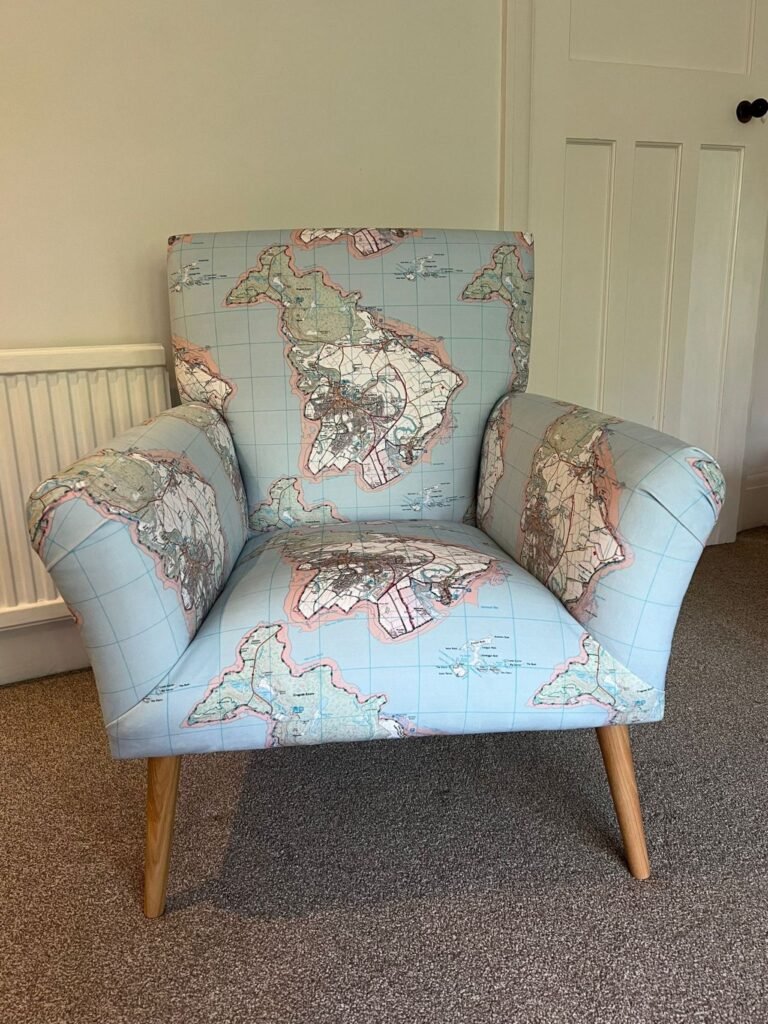

It is a bit unusual, but we found this one on LinkedIn. Chris Chambers received this armchair as a birthday gift.
MapsintheWild Armchair
-
sur Camptocamp: Optimizing Trail Management: Mergin Maps for Greater Annecy
Publié: 19 July 2024, 2:00am CEST
Pièce jointe: [télécharger]
Grand Annecy turned to Camptocamp to find the tool best suited to their needs.
-
sur The 2024 European Election Map
Publié: 18 July 2024, 10:00am CEST par Keir Clarke
Zeit has created an interactive map which visualizes the results in the 2024 European Union elections in 83,000 municipalities. The map in Explore Europe's Most Detailed Electoral Map colors each electoral area in Europe based on the politics of the leading candidate in the election.The map allows you to compare the 2024 European Union election results with the results from 2014 and 2019. By
-
sur SIG Libre Uruguay: Va una más…
Publié: 17 July 2024, 7:47pm CEST
-
sur gvSIG Batoví: edición 2024 del concurso: Proyectos de Geografía con estudiantes y gvSIG Batoví
Publié: 17 July 2024, 7:45pm CEST

Habiendo finalizado con éxito la etapa de capacitación de la iniciativa Geoalfabetización mediante la utilización de Tecnologías de la Información Geográfica, lanzamos la convocatoria a participar de la edición 2024 del concurso: Proyectos de Geografía con estudiantes y gvSIG Batoví. Organizan Ceibal, la Dirección Nacional de Topografía del Ministerio de Transporte y Obras Públicas (MTOP), la Inspección Nacional de Geografía y Geología de la Dirección General de Educación Secundaria (DGES), junto con la Universidad Politécnica de Madrid (UPM). Pueden acceder aquí a la convocatoria y bases.
Este año contamos con la colaboración de la Dirección General de Educación Técnica Profesional (DGETP), la Asociación Nacional de Profesores de Geografía (ANPG) y la Universidad Central “Marta Abreu” de Las Villas (Cuba).
Agradecemos el apoyo de todas las instituciones que hacen posible la realización de esta propuesta.
-
sur Mappery: The Cure for Anything is Salt Water
Publié: 17 July 2024, 11:00am CEST
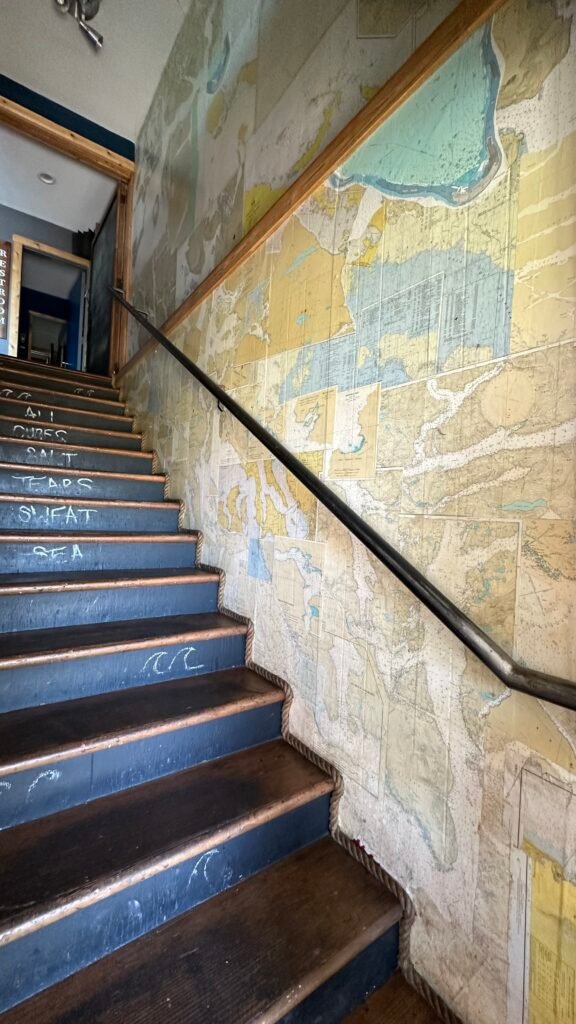
Darrell Fuhriman sent me these pics from the Salt Pub in Ilwaco, Washington.
“They decorated with old nautical charts, including a lamp shade and wallpaper on the stairs and entryway. “
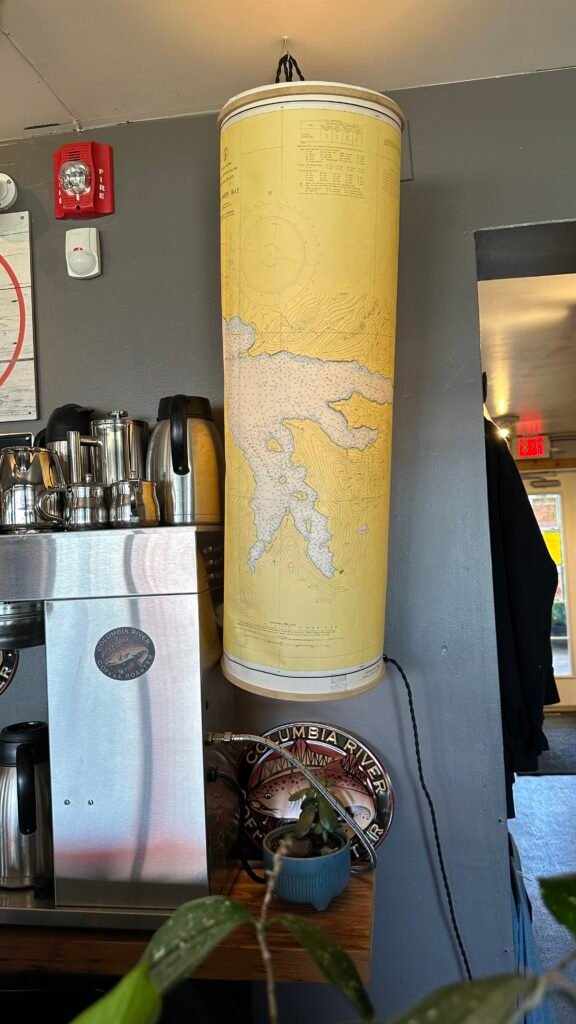
The stairs reference a quote by author Isak Dinesen. “The cure for anything is salt water — sweat, tears, or the sea.”
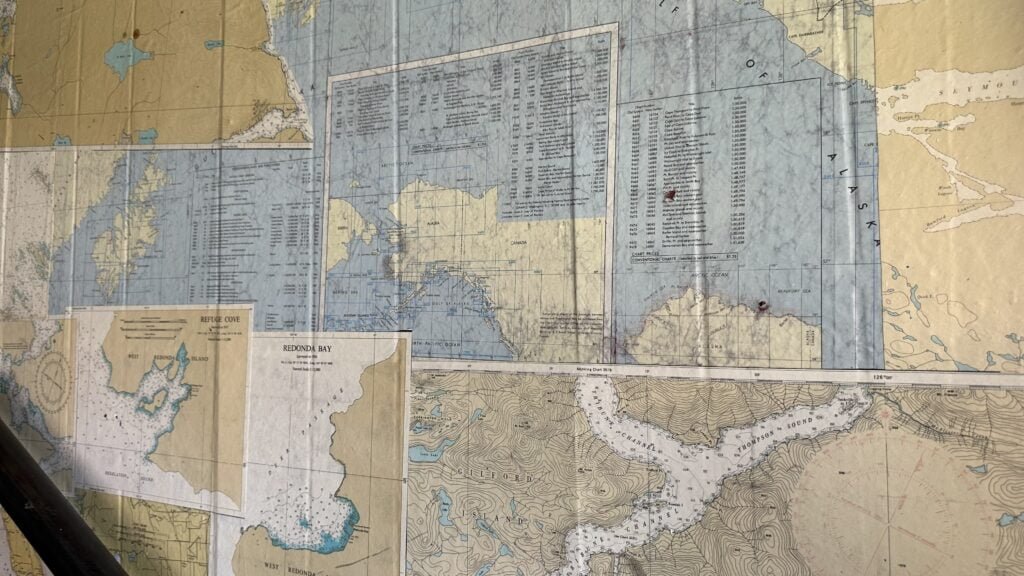
MapsintheWild The Cure for Anything is Salt Water
-
sur Battles of World War II & American Wars
Publié: 17 July 2024, 10:29am CEST par Keir Clarke
HistoryMaps has been very busy in the last few weeks, releasing new interactive maps visualizing the:Battles of World War IIBattles of the American RevolutionBattles of the American Civil War Nono Umasy's HistoryMaps website is a fantastic resource for anyone interested in world history, offering hundreds of interactive timelines and maps that explore historical events across the scope of





